Meatindex
The A-Z Glossary of the meat trade.
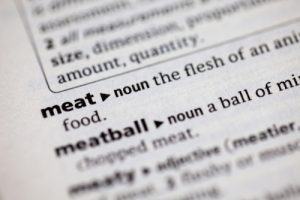
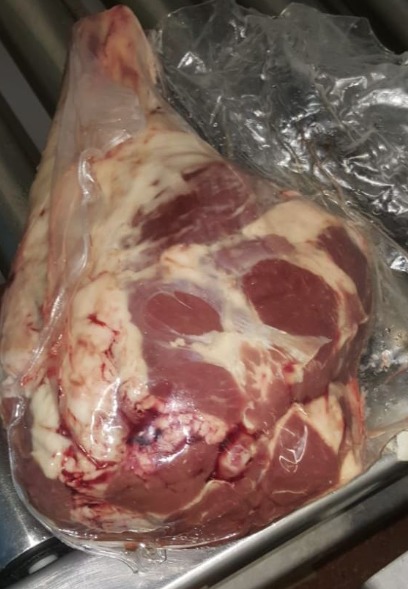
Aitch Bone Out
A lamb hind leg with the aitch bone and knuckle tip removed leaving the leg, shank and femur bone remaining.

AHDB stands for the Agriculture and Horticulture Development Board, which is a levy-funded organization in the United Kingdom. The AHDB operates as a non-departmental public body (NDPB) and is primarily focused on supporting the agricultural and horticultural industries. Its key objectives include enhancing the productivity, competitiveness, and sustainability of these sectors.
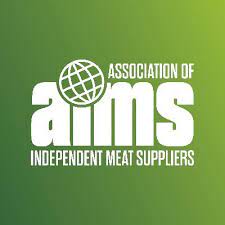
The Association of Independent Meat Suppliers (AIMS) is the voice for the meat industry in the United Kingdom in the 21stcentury. Operating with a unique and highly skilled team of industry professionals we maintain a regular dialogue with government and other organisations representing the interests of all stages of meat processing.
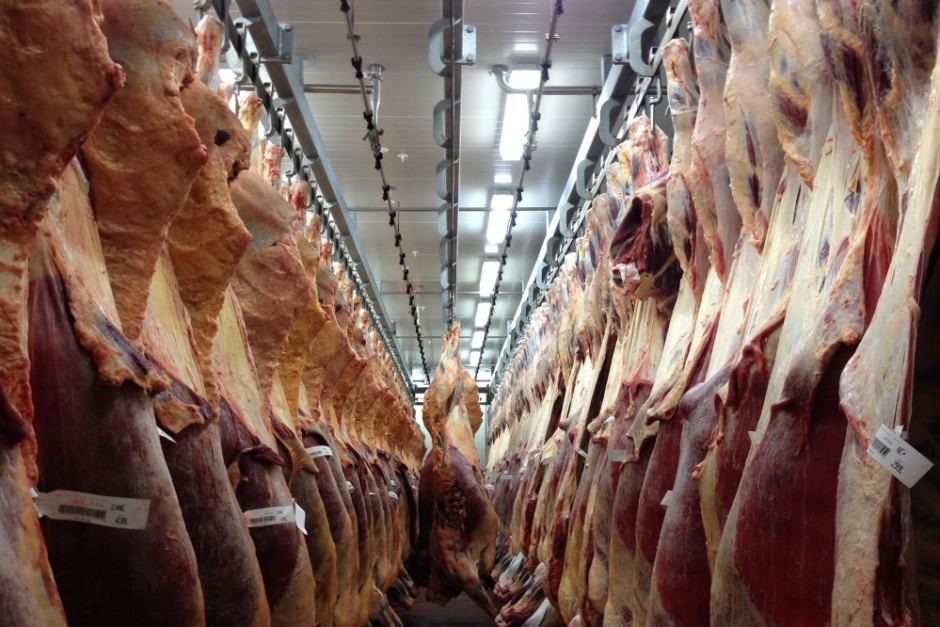
An abattoir, also commonly known as a slaughterhouse, is a facility where animals are slaughtered and processed for the production of meat and other products. These establishments play a crucial role in the food supply chain, providing meat for human consumption.
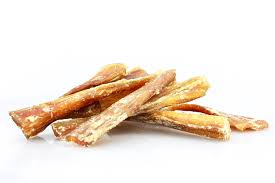
The tendon that is found in the hind limb of the beef animal that is used to suspend the beef carcass from the rail.

The process of holding raw meat for a period of time before processing for the purpose of tenderizing and condensing flavour. Dry aging is performed by storing the meat exposed to air under refrigeration.
Evaporation of moisture from the muscles serves to concentrate the flavour and cause significant weight loss. Natural enzymes break down connective tissue to improve tenderness. Wet aging is performed by anaerobically packaging the meat and storing under refrigeration. Wet aging increases the tenderness of the meat, and moisture (weight) loss is minimized.
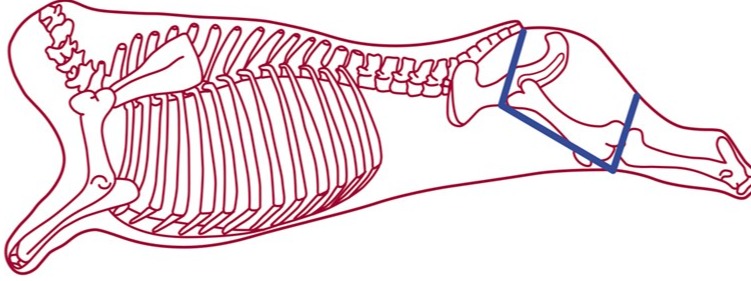
The portion of the pelvis that is exposed when a carcass is divided at the medial line.
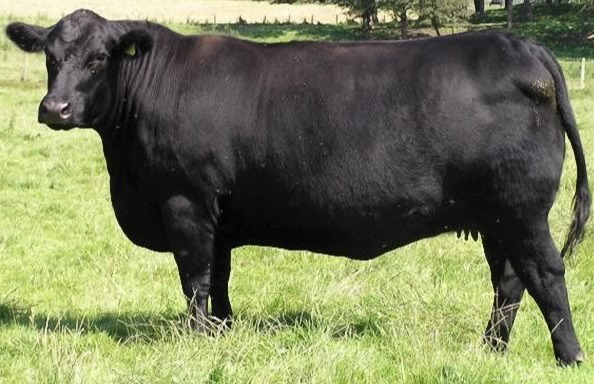
Angus cattle comprises two breeds of cattle from the original Scottish Aberdeen stock, Black Angus and Red Angus (the original name of the breed was Aberdeen Angus). Black is the predominant colour.
The Aberdeen Angus, sometimes simply Angus, is a Scottish breed of small beef cattle. It derives from cattle native to the counties of Aberdeen, Banff, Kincardine and Angus in north-eastern Scotland. In 2018 the breed accounted for over 17% of the UK beef industry.
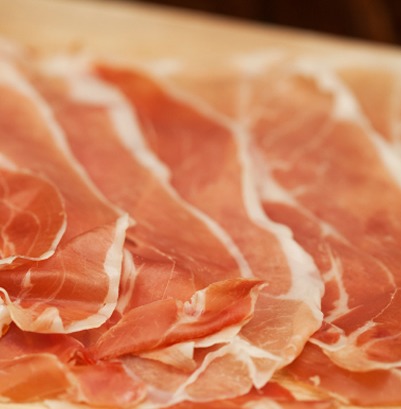
An air-dried ham, similar to prosciutto, produced in the Ardennes region of Belgium. The hams are hand-rubbed with a mixture of salt, juniper berries, thyme, and coriander or brined, smoked over beech wood until dark brown, and aged. Finished hams typically possess a full-bodied flavor and soft texture. IGP-certified hams are marked with a yellow-numbered lead seal as a guarantee of quality and origin. The Belgium-French name is jambon d’Ardenne.
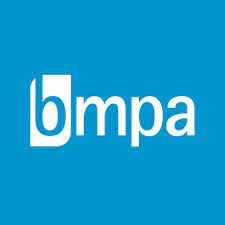
The British Meat Processors Association represents the majority of companies working in the British meat industry.
Members are responsible for supplying fresh meat and meat products to retailers, restaurants and food service companies throughout the UK.
Working alongside the Government and other organisations to help develop a meat industry that is competitive, professional and provides a sustainable, long-term and affordable supply of food to British customers.
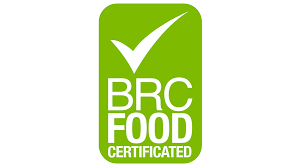
British Retail Consortium. A trade association certification that upholds specific standards within the industry.
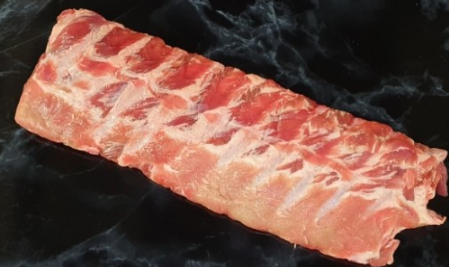
The portion of the rib-cage structure that lies directly ventral to the loin on either lateral side of the spine. A full set contains 13 rib pieces along with the intercostal muscles. Unless otherwise specified, these ribs are from a pig.
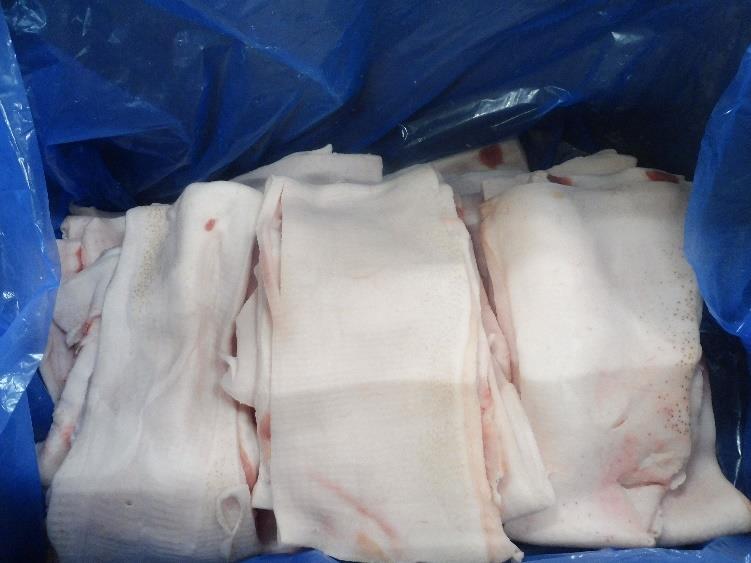
Backfat refers to the layer of fat located on the back of an animal, typically between the skin and the muscles. The amount and thickness of backfat can vary between different animal species and breeds. Backfat is often an important consideration in the evaluation of meat quality, especially in the pork and beef industries.
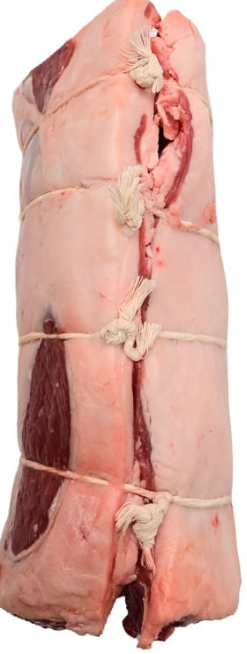
A very large roasting cut, usually of beef, designed to serve a large number of people. The cut is usually produced from a carcass that has not been split into left and right sides. A baron of loins is the most common.
Sadly no longer possible to buy in UK as regulations require the removal of the spinal chord.
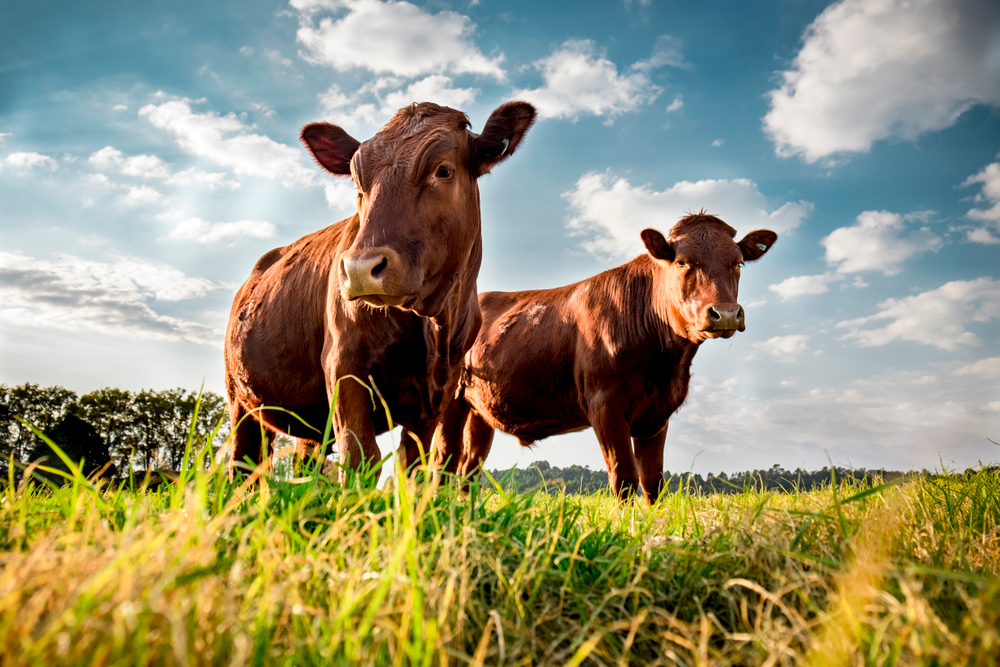
The term “beef” has its origins in Old French and Middle English. It comes from the Old French word “boef,” which means “ox” or “cow.” The Old French term, in turn, is derived from the Latin word “bos” or “bovem,” meaning “ox” or “cow.”
During the medieval period, especially after the Norman Conquest of 1066, the English language underwent significant changes, and various words from Old French were adopted. This linguistic influence is evident in the use of the word “beef” to refer to the meat of cattle. It reflects the Norman nobility’s use of French, while the English-speaking commoners, who raised and worked with the animals, continued to use Old English terms like “ox” or “cow” for the live animals.

Jerky is one of the oldest ways of preserving food; the meat was cut into strips, smoked, and dried in the sun. Today it’s smoked and dried in smokers.
Jerky is ready-to-eat, needs no additional preparation and can be stored for months without refrigeration.

A brown to greenish yellow fluid secreted by the liver and stored in the gall bladder. Bile aids in the emulsification and absorption of fats in the digestive process. Bile is used by the pharmaceutical industry for steroid production and for digestive aids.

The most commonly used commercial method for freezing meat products. Air is cooled to between -10C to -40C, then by blowers increased to an air velocity of 760 mph which causes the product to be frozen at a rapid rate. The meat products must be wrapped to protect from freezer burn.
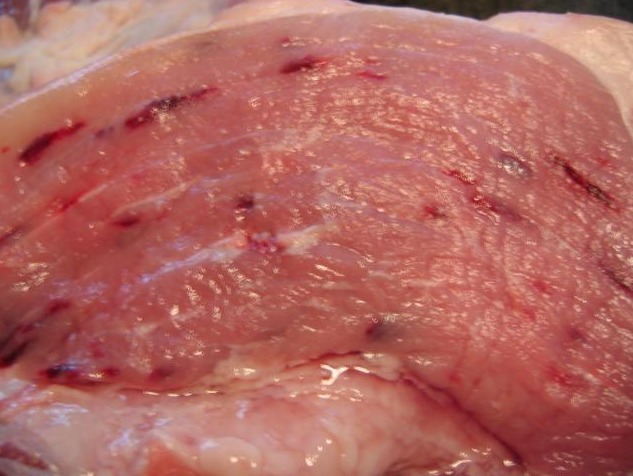
The appearance of minute haemorrhages in the muscle, fat and connective tissue due to a transient rise in blood pressure at the time of slaughter. Particularly evident in pork that has been cured.
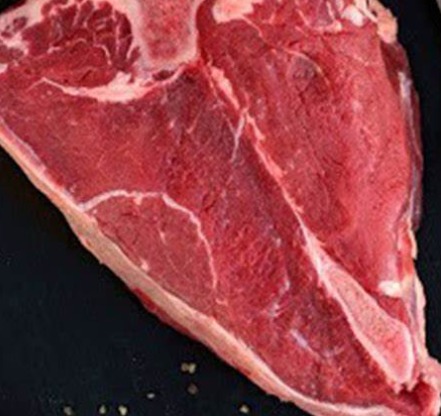
Development of the bright colour associated with the formation of oxymyoglobin on the lean surface of a cut of meat when exposed to oxygen. In beef this takes approximately 20 minutes. The colour goes from a purplish red to a bright cherry red.

A “bobby calf” is a term used to refer to a very young calf, usually a male, that is still at an age where it is dependent on milk. The term “bobby calf” is often applied specifically to male calves that are surplus to dairy farming operations, as they are not needed for milk production and may be destined for the veal industry.
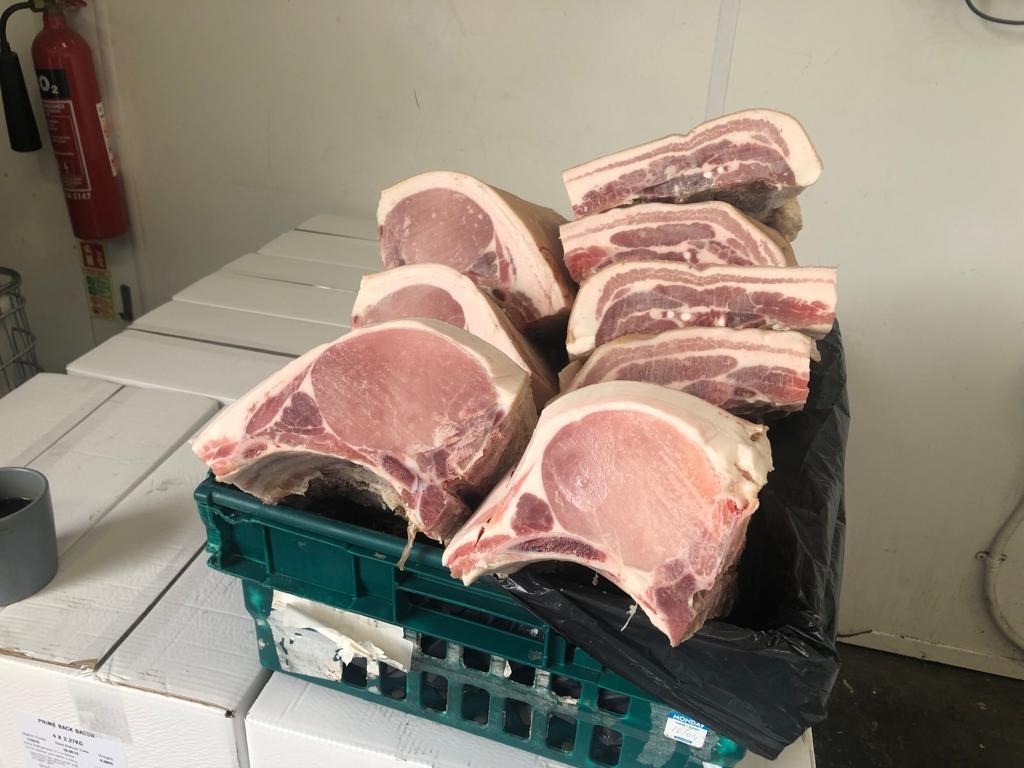
“Bone taint” refers to an undesirable off-flavor that can be present in meat, particularly pork, as a result of certain conditions or practices during production. It is a term often associated with the presence of boar taint, a specific type of off-putting odour and flavour found in the meat of uncastrated male pigs (boars).
Boar taint is primarily caused by the accumulation of two compounds: androsterone and skatole. These compounds are produced in the testes and the intestines of male pigs, respectively. Boar taint is typically not an issue in meat from female pigs or castrated males, as these compounds are present in much lower concentrations.
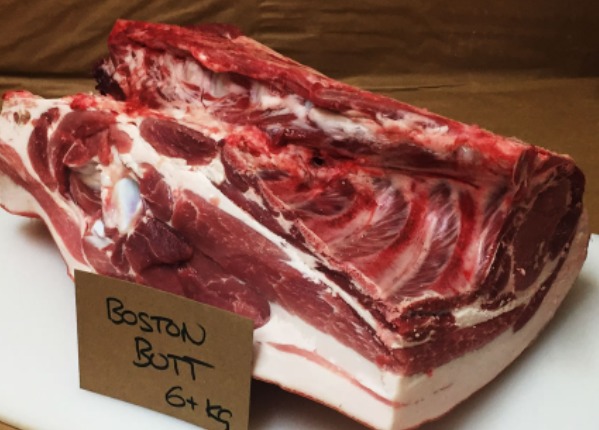
The term “Boston cut” can refer to two different types of meat cuts, depending on whether it’s pork or beef:
- Boston Butt: This is a cut of pork that comes from the upper part of the shoulder from the front leg. It’s best known as the cut used to make pulled pork, a staple of barbecues in the southern United States. In the UK, a Boston butt starts life as a neck-end; half of the pig’s shoulder. The other half is often called a hand and spring.
- Boston Beef Roast: This is a cut of beef that comes from the shoulder of the cow. It’s also known as a Cross Rib Roast or English Roast. This cut of meat is located lower down the shoulder, where it connects with the rib portion of the animal.
Both cuts are popular for their flavour and tenderness when cooked slowly.
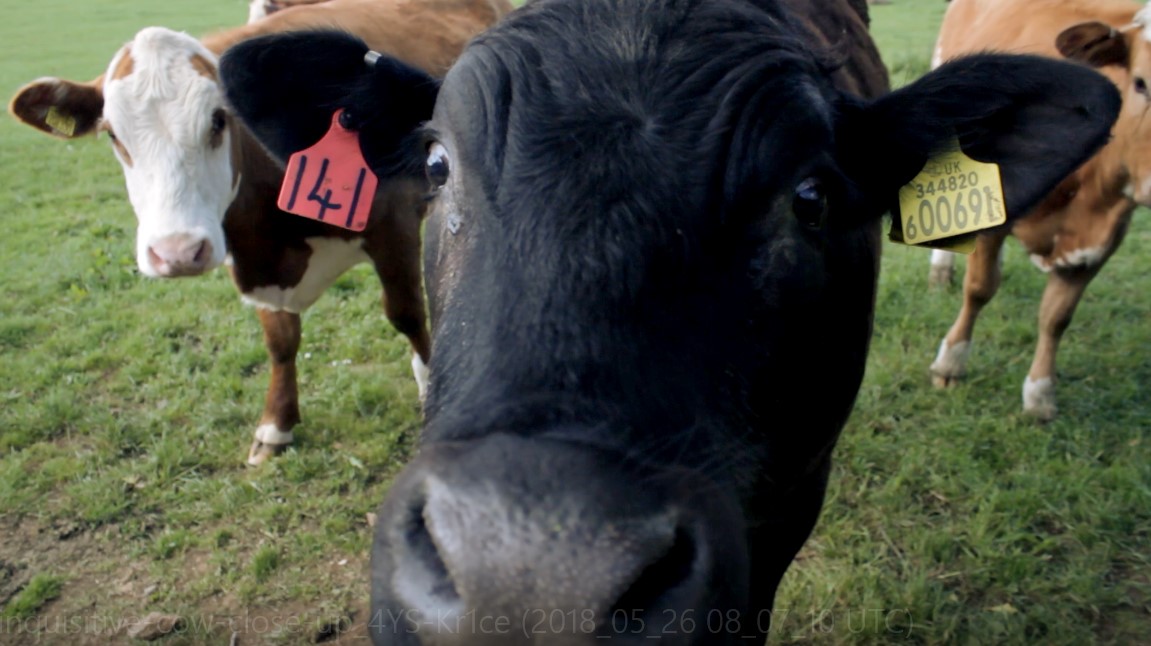
“Bovine” is a term that refers to cattle or members of the Bovidae family, which includes domesticated cattle (Bos taurus), wild cattle, and certain related species. Bovines are characterized by their cloven hooves and four-chambered stomachs, which enable them to efficiently digest fibrous plant materials.
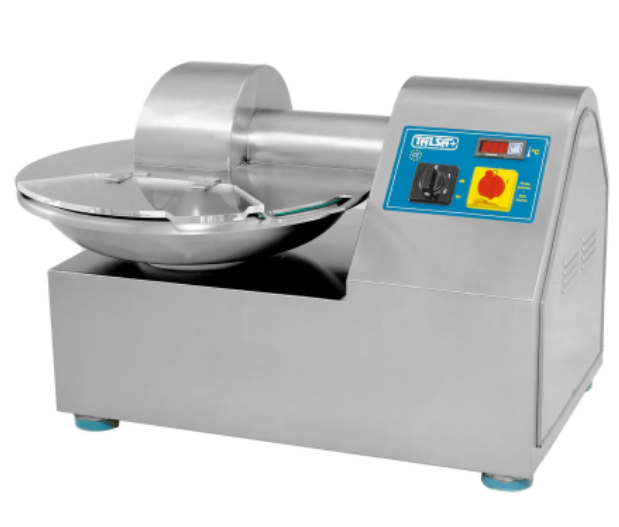
A piece of equipment used in sausage making that consists a round bowl in which meat is placed that rotates so the meat is passed through a series of blades rotating at about 5000 rpm and is chopped into fine particles.
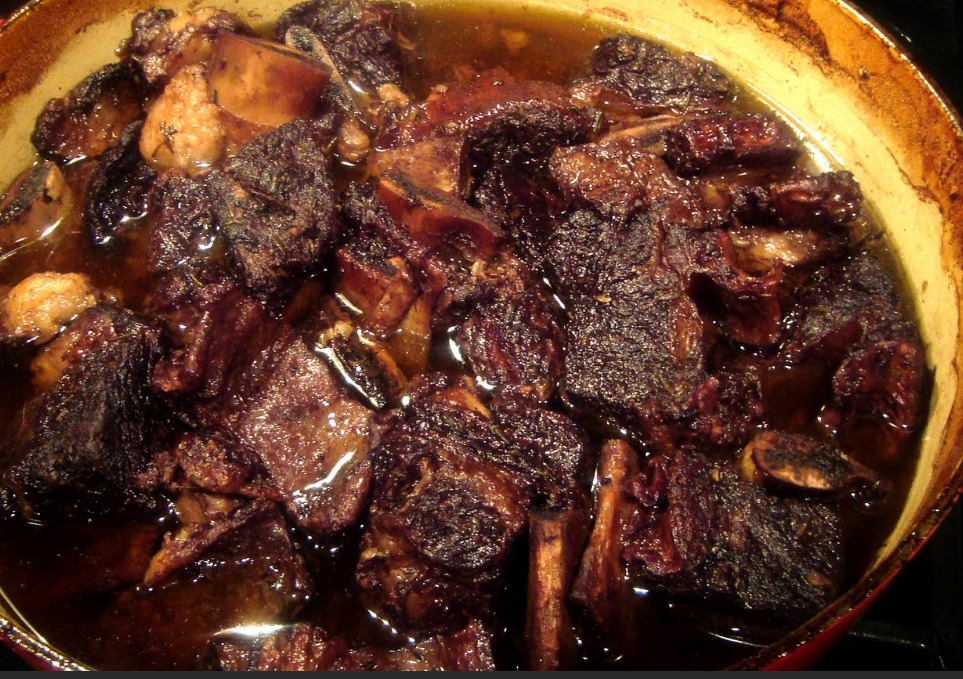
“Braising” is a cooking method that involves slow-cooking food in a covered pot with a small amount of liquid. It is a versatile technique commonly used for tougher cuts of meat, such as beef brisket, short ribs, or lamb shanks, as well as vegetables. Braising helps tenderise tough cuts and infuses them with rich flavours.
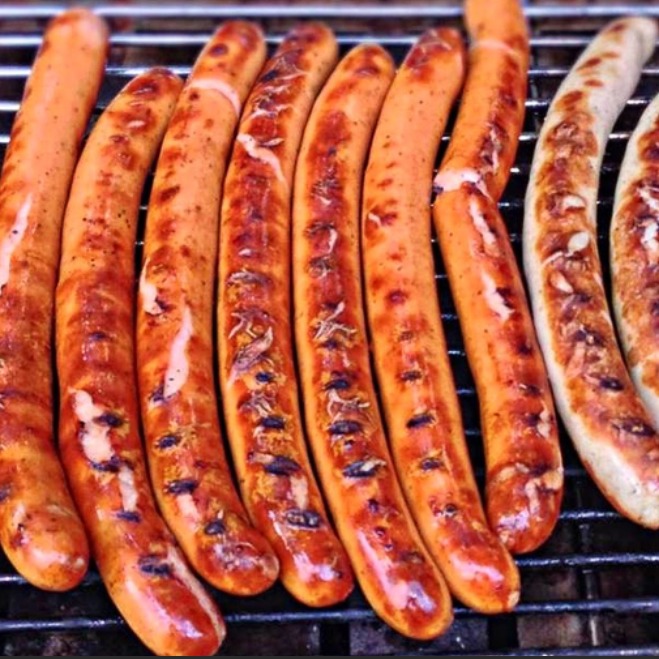
A sausage of German origin sausage usually composed of veal, pork, and or beef. In different parts of the world, this sausage made be sold either cooked or raw. In its various forms, the meat filling may either be emulsified, finely ground, or coarsely ground. The name is derived from the German words brät, finely chopped meat, and wurst, sausage.
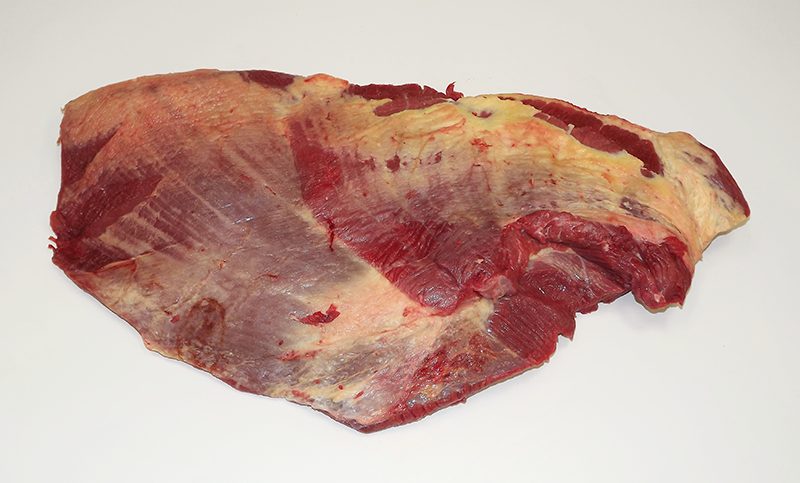
The brisket is a cut of beef that comes from the lower chest or breast area of the animal. This cut is known for its rich flavor but can be relatively tough, so it benefits from slow cooking methods that help break down the connective tissues, resulting in tender meat.
Key characteristics of brisket include a good amount of marbling (intramuscular fat) and connective tissue, which contributes to the flavour and texture. Brisket is often used for smoking, braising, or slow roasting to enhance its tenderness and develop its distinctive taste.
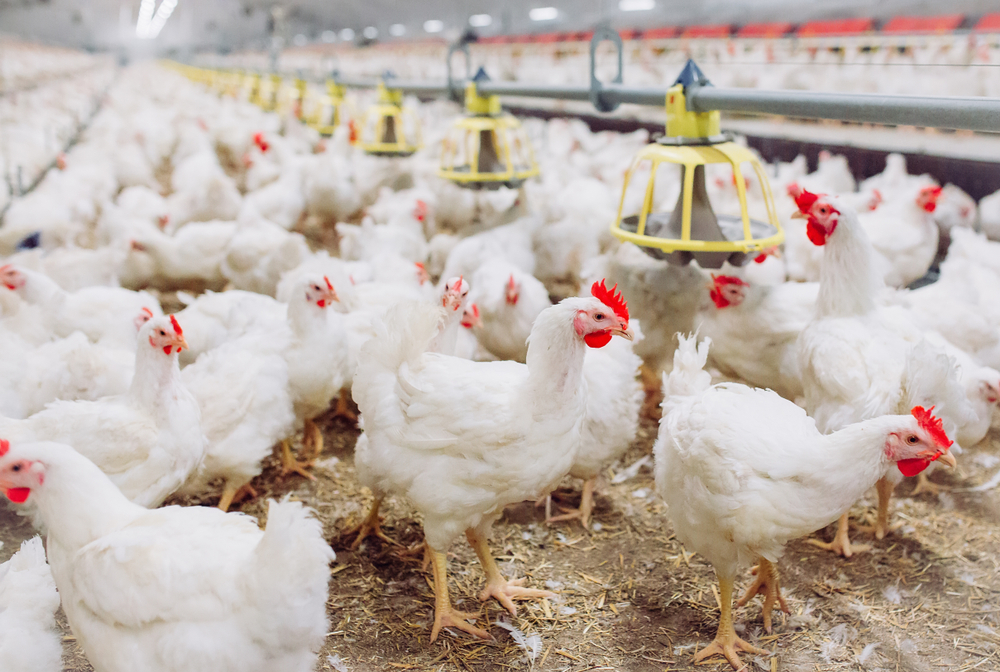
A young chicken (usually 6-8 weeks of age) , either sex that has tender-meat with soft, pliable, smooth-textured skin and flexible breast-bone cartilage.

A intact male beef animal that is less mature than a bull. Skeletal maturity distinguishes the difference between the two. Bullock carcasses have slight red and slightly soft chine bones, and the cartilage on the ends of the thoracic vertebrae have some evidence of ossification; the sacral vertebrae are completely fused; the cartilage on the ends of the lumbar vertebrae are nearly completely ossified; and the rib bones are slightly wide and slightly flat.
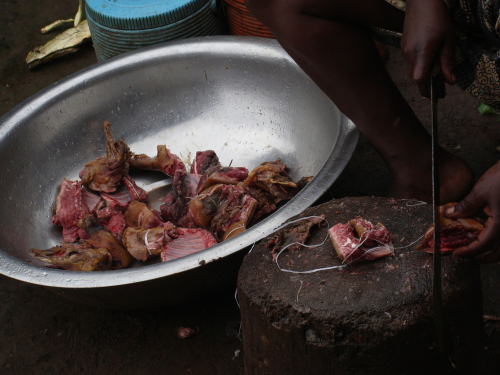
Meat obtained by hunting wild animals especially in Africa and Asia
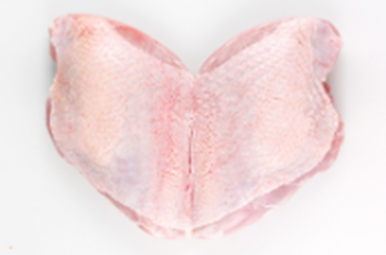
To split steaks, chops, cutlets and roasts in half leaving halves hinged on one side.
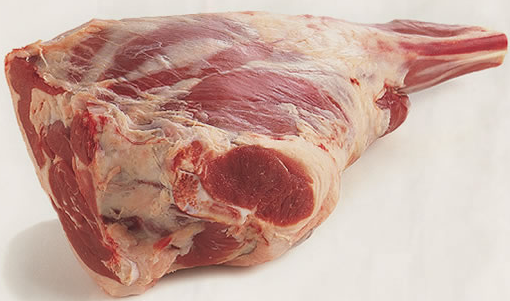
Chump Knuckle Tip
A lamb hind leg with the chump and knuckle tip are removed, with shank, aitch bone, and femur bone remaining, and can also be referred to as a short cut lamb leg.
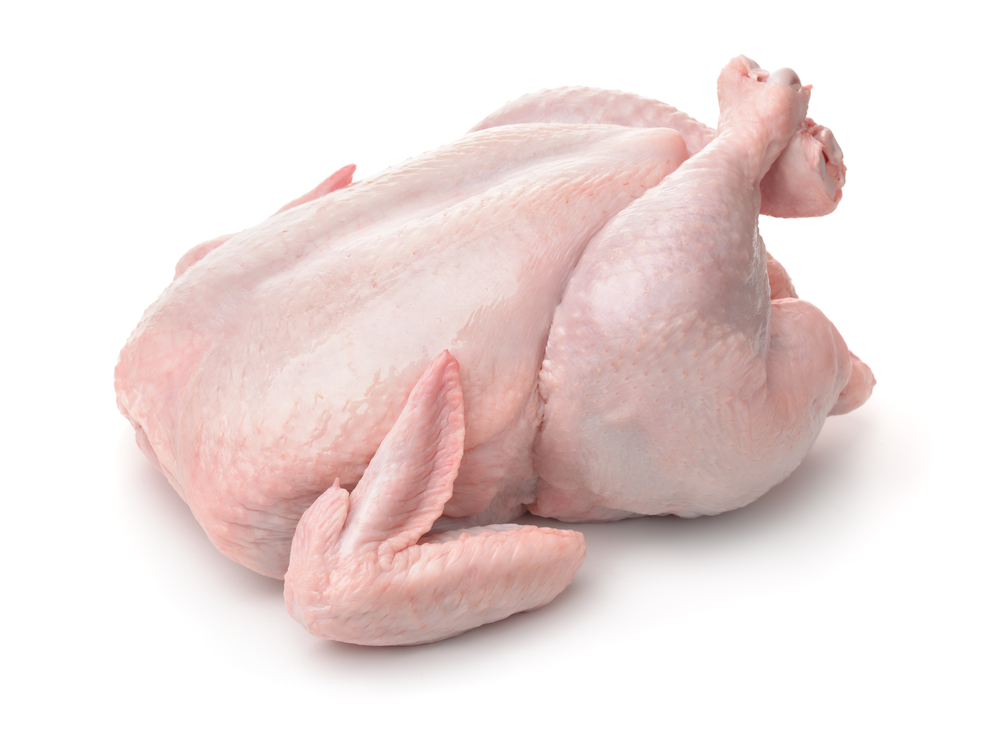
A capon is a male chicken that is castrated before it matures, and this is done because a lack of testosterone causes more fat to form on the chicken’s muscles.
A castrated cockerel fed a fattening diet to make them particularly juicy and flavourful. It is no longer legal to produce capons in the UK. Capon is still a popular Christmas roast in Italy.

A captive bolt pistol (also known as a captive bolt gun, a cattle gun, a stunbolt gun, a bolt gun, a stun gun and a stunner) is a device used to attempt the stunning of animals prior to slaughter.
The goal of captive bolt stunning is to inflict a forceful strike on the forehead with the bolt in order to induce unconsciousness. For the non-penetrating bolt gun variation, the bolt may or may not destroy part of the brain, while brain tissue is always destroyed with the penetrating bolt gun.
The bolt consists of a heavy rod made of corrosion-resistant alloys, such as stainless steel. It is held in position inside the barrel of the stunner by means of rubber washers. The bolt is usually not visible in a stunner in good condition. The bolt is actuated by a trigger pull and is propelled forward by compressed air, a spring mechanism, or by the discharge of a blank round ignited by a firing pin. After striking a shallow but forceful blow on the forehead of the animal, spring tension causes the bolt to recoil back into the barrel.
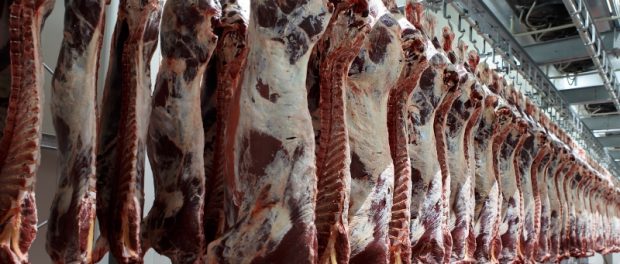
“Carcase weight,” also spelled “carcass weight,” refers to the weight of an animal’s body after it has been slaughtered, dressed, and processed in an abattoir or slaughterhouse. The term specifically applies to the weight of the carcass without certain non-edible parts, such as the head, hide, feet, and internal organs. Carcass weight is a crucial metric in the meat industry as it provides a standardized measure for evaluating the amount of meat produced from an animal.
The weight of the carcass is an essential factor for both producers and consumers, as it influences the yield of meat that can be obtained from the animal. When discussing meat production and trade, the carcase weight is often used as a basis for pricing and comparison.
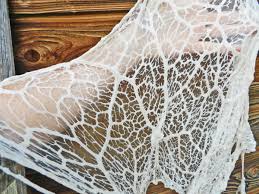
Caul fat is the thin, lacy membrane of an animal surrounding the internal organs, known as the greater omentum. In the culinary world, the animal from which it comes is usually a pig, but the caul fat of other animals is also available.
Thin and lacy, and very similar to a web of netting, caul fat is widely used in French charcuterie, providing sausages and cured meats with a succulent flavour and additional moisture.
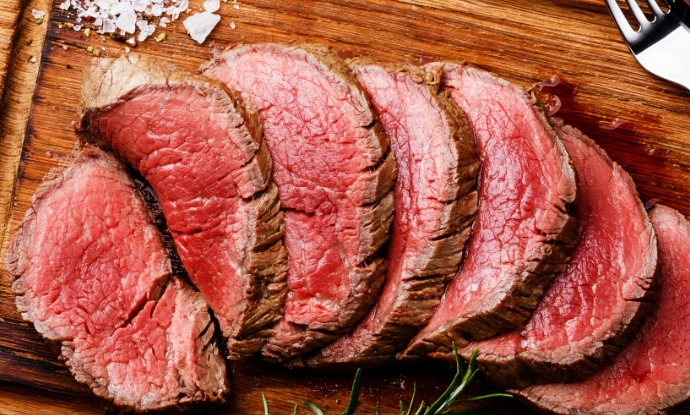
(French) In French butchery in the early 20th century, the beef tenderloin was divided into five portions of approximately equal length. The second piece from the rump end, the one where the iliacus and the psoas major join, was the chateaubriand.
In the mid-20th century in America, this piece was used as a roast cut for two people in fine restaurants. There is also a 19th-century French steak dish by the same name that uses the same cut.
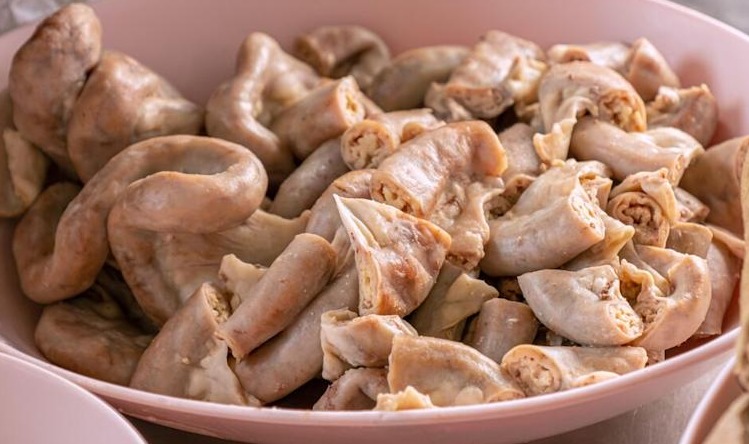
Chitterlings, pronounced “chit-lins,” are a type of food made from the small intestines of pigs, particularly the lower part of the intestines. They are a traditional dish in various cultures, and their preparation often involves a thorough cleaning and then cooking. Chitterlings have a distinct taste and texture and are enjoyed by those who appreciate their unique flavour.
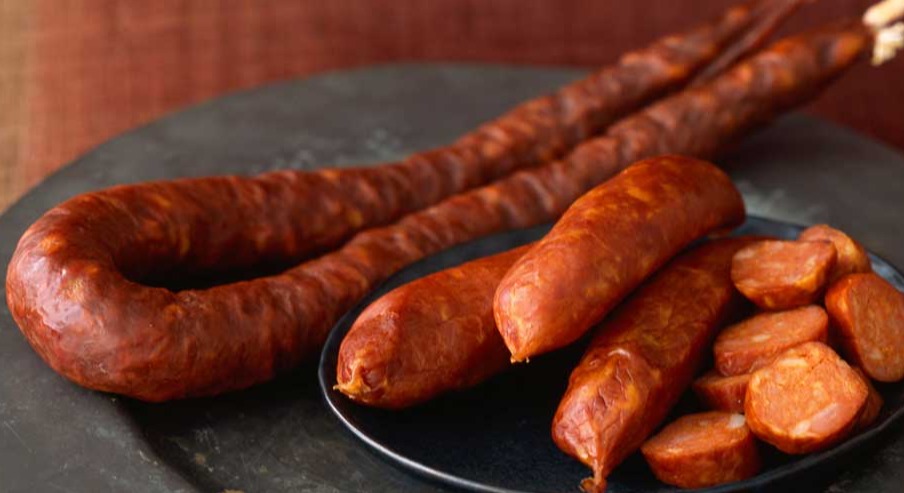
A highly-seasoned, spicy sausage whose red colour comes from spices made from red-coloured peppers. Spanish varieties are cured, dried, and ready to eat, similar to other dried, cured sausages. Mexican varieties are fresh and require cooking before eating.
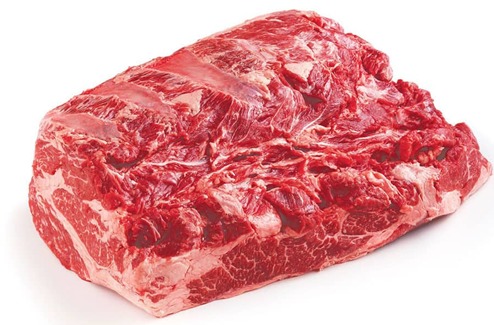
“Chuck” refers to a specific cut of beef that comes from the shoulder and neck region of the animal. This cut is known for its rich flavour but can be relatively tough, containing a good amount of connective tissue. It is a versatile cut that can be used for various cooking methods, including braising, stewing, roasting, or ground beef.
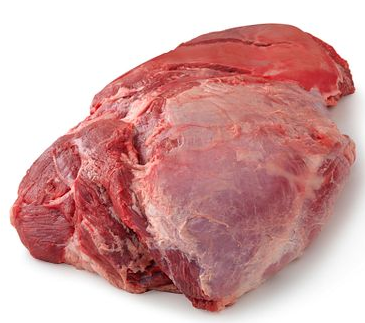
This is an economical cut that is flavourful but a less tender meat. It is cut from the middle of the shoulder and usually sold as stewing steak or used in burgers. Suitable for slow cooking in stews.
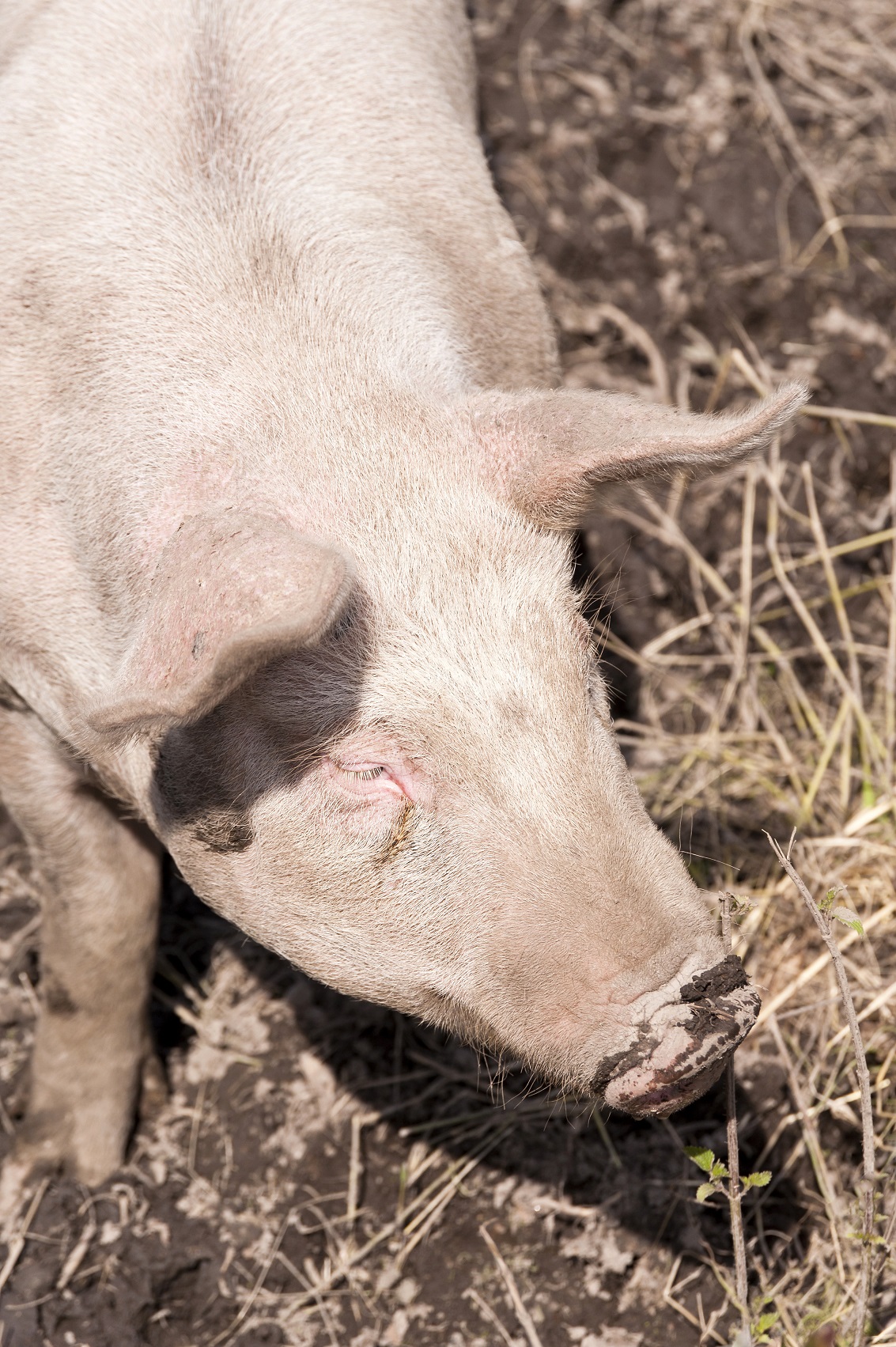
CO2 stunning, or carbon dioxide stunning, is a method used in the slaughter of animals, particularly poultry, to render them unconscious and insensible to pain before processing. The method involves exposing the animals to a controlled atmosphere containing high concentrations of carbon dioxide (CO2), which induces unconsciousness and serves as a humane way to facilitate the subsequent steps of slaughter.
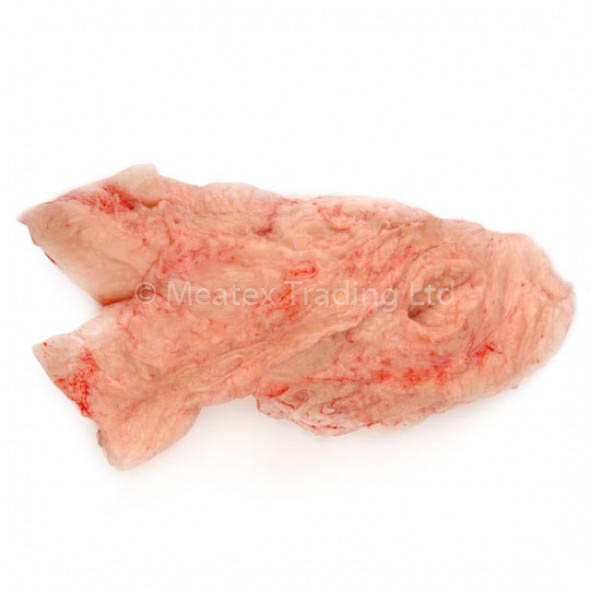
Cod fat is a lump of fat which can be sliced to cover roasting joints to keep them moist and stop them from drying out during the cooking process. It is taken from the scrotum / crotch area of beef cattle, and hence probably why cod piece was so named.
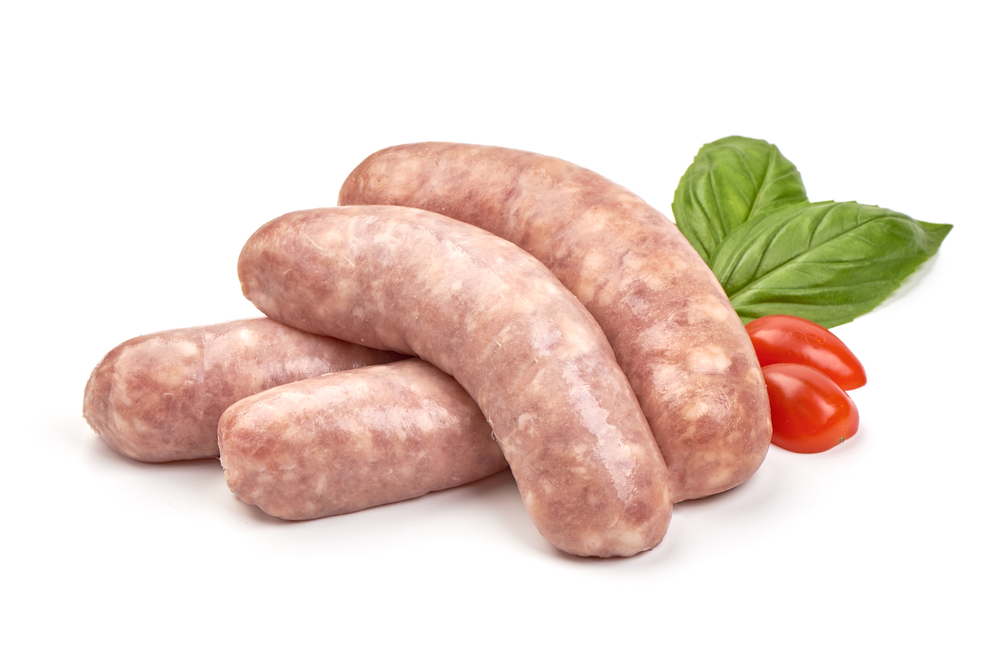
Collagen casings are mainly produced from the collagen in beef or pig hides and the bones and tendons. It can also be derived from poultry and fish. They have been made for more than 50 years and their share of the market has been increasing. Usually the cost to produce sausages in collagen is significantly lower than making sausages in gut because of higher production speeds and lower labor requirements.
The collagen for artificial casings is processed extensively. It is formed by extrusion through a die to the desired diameter, dried and shirred into short sticks up to 41 cm (16 in) long that contain as much as 50 m (160 ft) of casing. In a newer process, a form of dough is coextruded with the meat blend, and a coating is formed by treating the outside with a calcium solution to set the coating.
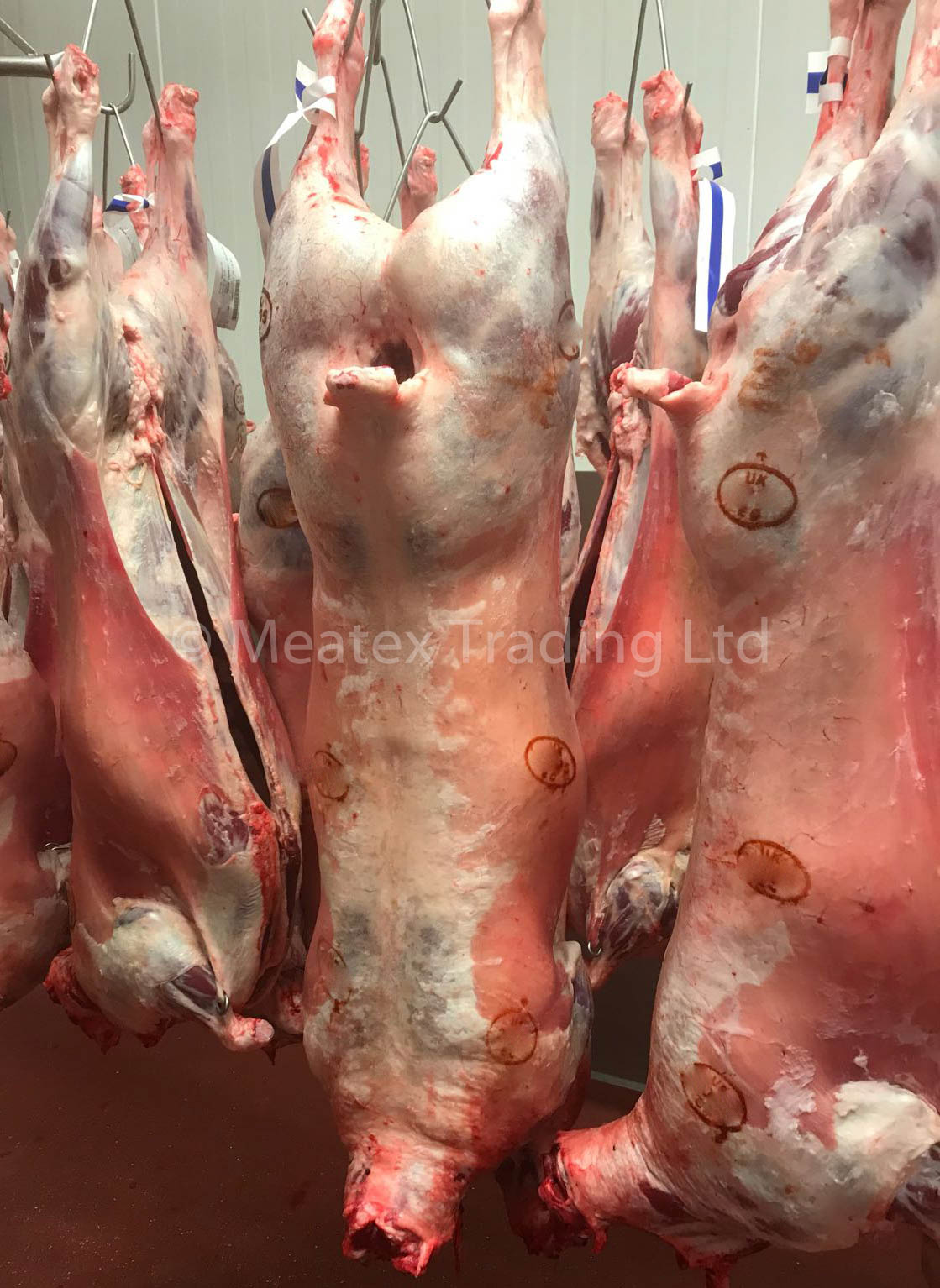
Conformation refers to the balanced growth of carcass sections or wholesale cuts and the muscle-to-bone ratio, ensuring proper proportions.
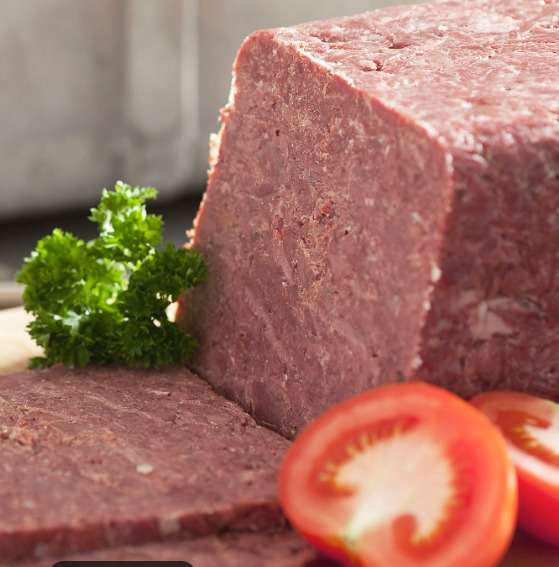
Corning refers to pickling beef in a seasoned brine or curing beef in salt. The term “corn” comes from the Old English word used describe any small hard particles. Today, briskets or eye of rounds are used to make corned beef, originally all cuts were used when corned beef was used for both land- and sea-based military units.
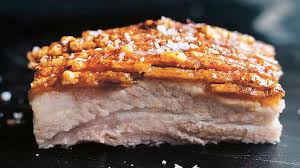
“Crackling” refers to the crispy, crunchy skin of roasted or cooked meat, often most commonly associated with pork. It is a popular and highly appreciated element in many cuisines, especially in dishes where the skin is cooked to a crispy texture.
Pork crackling is typically achieved by roasting or cooking pork with the skin on. The outer layer of fat under the skin renders and becomes crisp during the cooking process. The crackling is prized for its savory and crunchy texture, providing a delightful contrast to the tender meat beneath.
The key to achieving good crackling is ensuring the skin is dry before cooking and using a high temperature to encourage the fat to render and the skin to crisp up. Various seasoning methods, such as rubbing the skin with salt or other spices, are often employed to enhance the flavor of the crackling.
While crackling is most commonly associated with pork, similar crispy skin can be achieved with other meats, such as poultry (chicken or duck). The methods and techniques for achieving crackling may vary depending on the type of meat and the cooking process used.
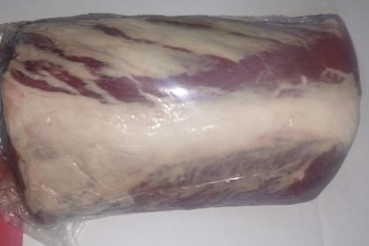
A prime cut of beef steak meat also known as a ribeye.
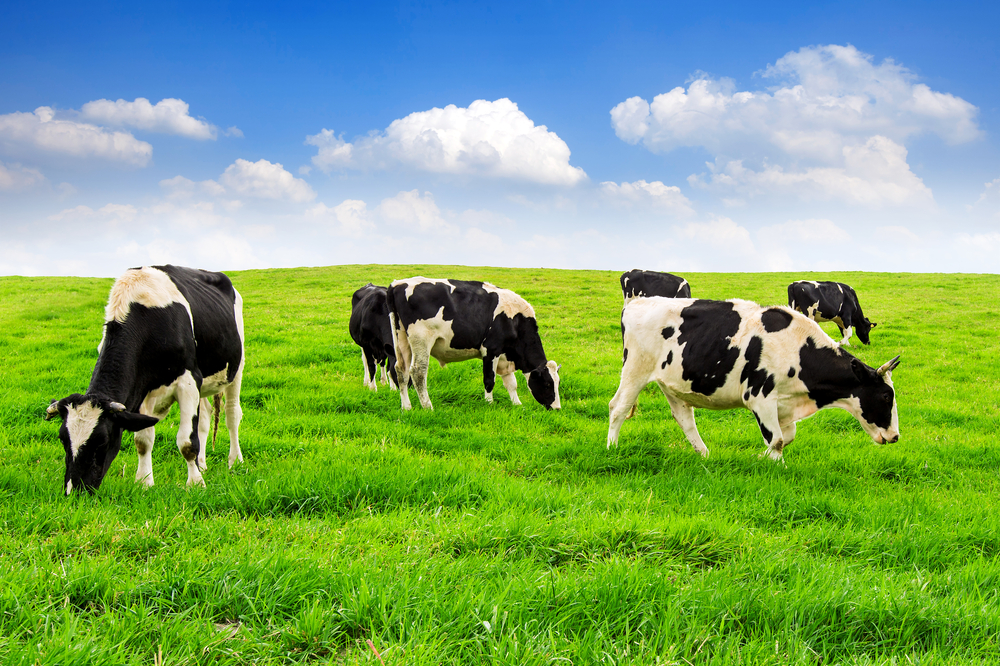
“Cull” is a term used in agriculture and animal husbandry to refer to the removal or selection of animals from a group based on specific criteria. The culling process is typically done to improve the overall quality, health, or productivity of a population. The reasons for culling can vary depending on the context, such as livestock farming, wildlife management, or disease control.
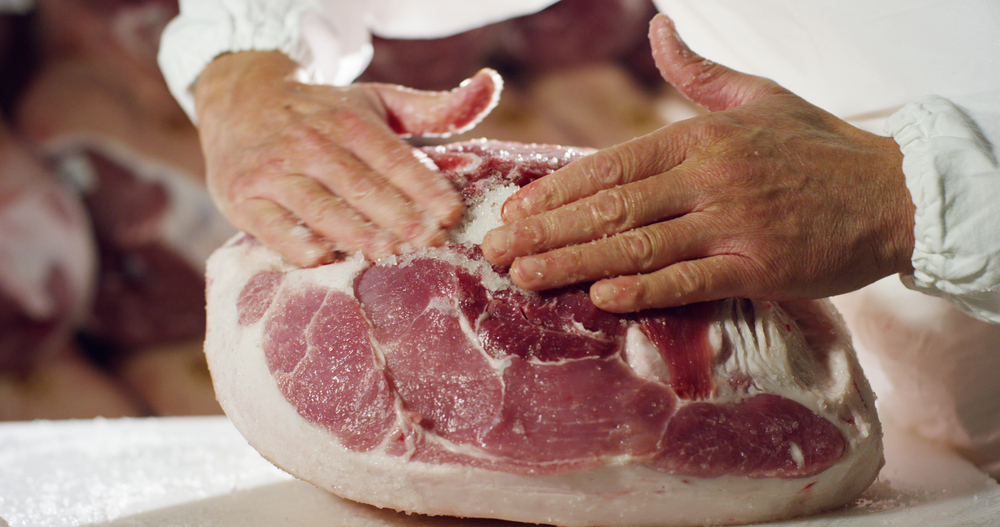
Meat curing is a method of preserving and flavoring a wide variety of proteins with salt and other flavorings and preservatives. Curing, which can significantly extend the shelf life of fresh meat, has been popular since the dawn of civilization. By removing moisture via osmosis, curing halts potential microbe growth (therefore, preventing food spoilage) and imbues the meat with a rich, savory flavour.

Delivered duty paid
A delivery agreement whereby the seller assumes all of the responsibility of the transporting of the goods until they reach the destination. This includes all transport costs and export clearance and customs documentation.
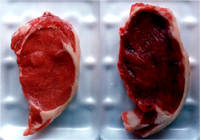
Beef with lean tissue that is dark in colon. It is the result of stress that has reduced the glycogen content in muscle prior to slaughter, The muscle pH of a dark cutter is generally high which results in higher water-holding capacity and more light absorbency than normal thus causing a dark lean colour.

A cheaper cut of meat used in stew for braising. Usually inner cheek meat.
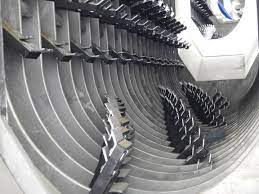
The dehairing machine is equipped with rotating rubber paddles that effectively remove hair from a scalded pig carcass.
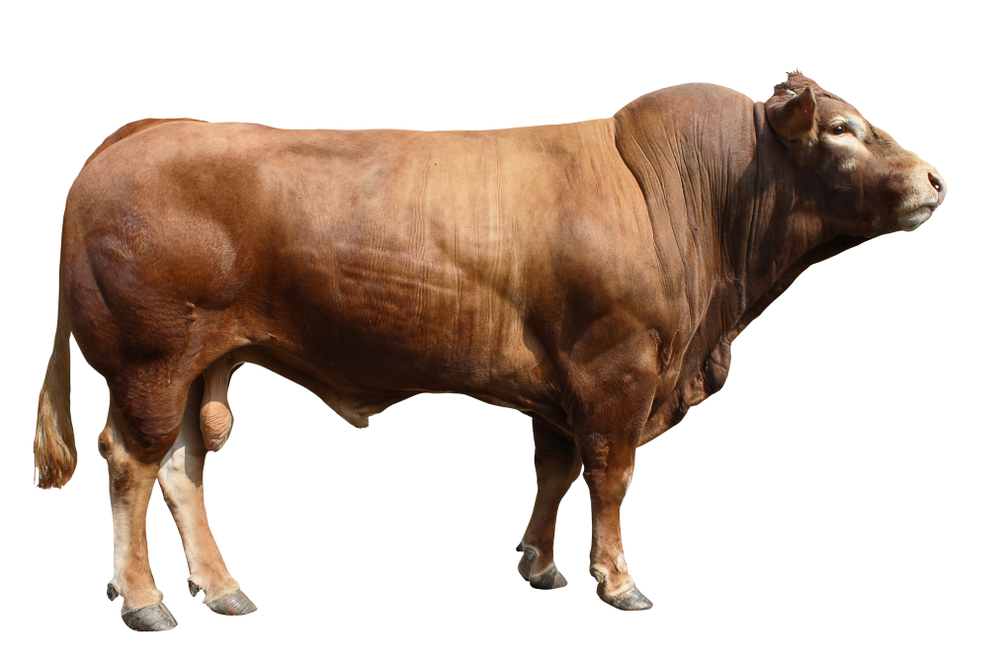
Double muscling is a genetic condition in certain cattle breeds that results in an increase in muscle mass and a distinctively muscular appearance. This condition is characterized by the development of abnormally large and well-defined muscles in the animals, particularly in the hindquarters and shoulders. Double muscling is primarily associated with the presence of a mutation in the myostatin gene.

“Dressing percentage” is a term used in the meat industry to describe the proportion of the live animal’s weight that remains as carcass after it has been slaughtered and dressed (processed). It is expressed as a percentage and is a key factor in evaluating the efficiency of meat production and estimating the yield of meat from a live animal.
The dressing percentage is calculated using the following formula:
Dressing Percentage=(Carcass WeightLive Weight)×100
In this formula:
- Carcass Weight is the weight of the animal’s carcass after it has been processed in the slaughterhouse.
- Live Weight is the weight of the live animal before it is slaughtered.
The dressing percentage can vary depending on factors such as the species of animal, breed, age, and the level of finish (amount of fat) on the animal. Generally, well-finished animals with higher muscle mass and fat content will have higher dressing percentages.
Dressing percentage is an important metric for both producers and processors in the meat industry. It provides insights into the efficiency of converting live weight into carcass weight, which is a critical factor in economic considerations for both livestock producers and meat processors.
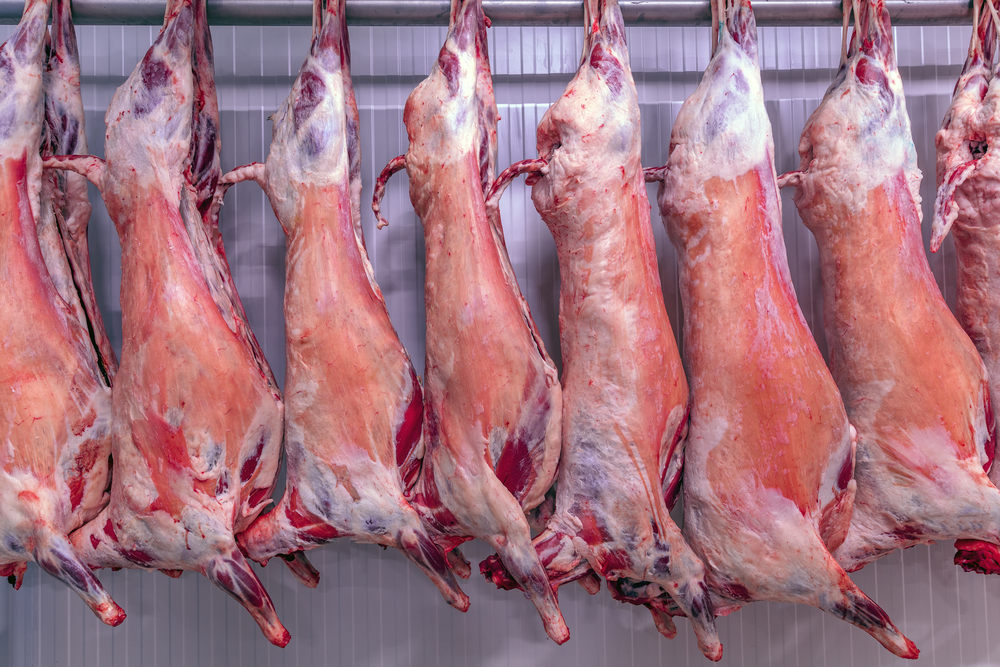
The percentage of an animal’s liveweight that is its carcase weight. Used to estimate a live animal’s carcase weight from its liveweight: carcase weight / final liveweight x 100.
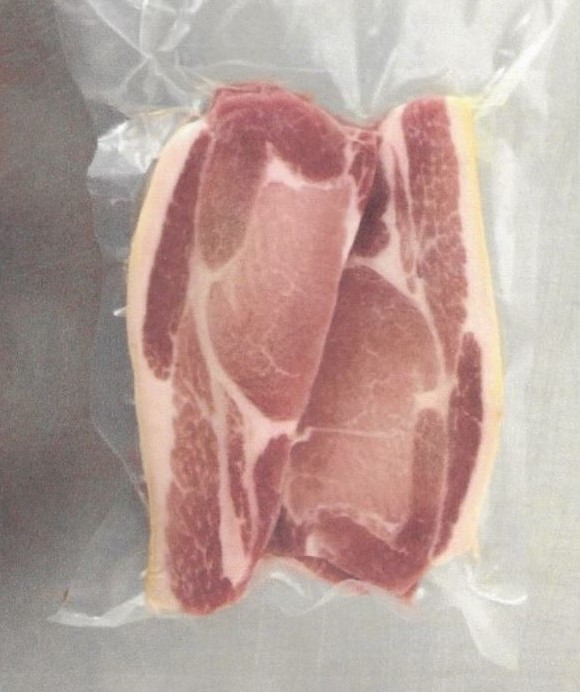
The application of a curing mixture of salt, sugar, sodium nitrite, erythorbate and spices by rubbing them on the product to be cured, such as dry cured bacon.
Dry curing bacon involves the meat being packed in a dry salt rub rather than immersed or injected with a wet brine.
The dry salt can be combined with other flavours and ingredients to provide a desired taste to the bacon. For instance herbs or spices may be used as part of the salt rub to provide a distinctive taste.
The dry cured bacon may also be smoked after the curing process.

Portions of the animal other than the carcass that are suitable for human consumption.
include hearts, livers, tails, tongues, lips, kidneys, tripe (stomach), brains, sweetbreads (the thymus pancreas gland, melt (spleen), fries (testicles), head meat, fats and other trimmings, chitterlings and natural casings (intestines), blood, and certain bones.
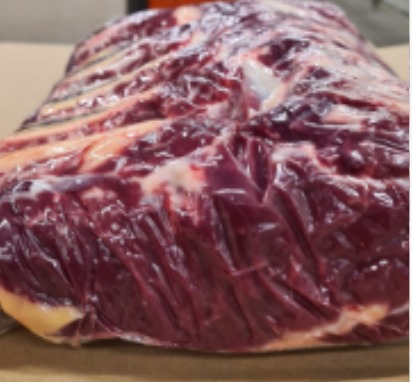
A premium cut of beef used for steaks and roasts. Usually a variation of a ribeye but sometimes the fingerbones are left in.
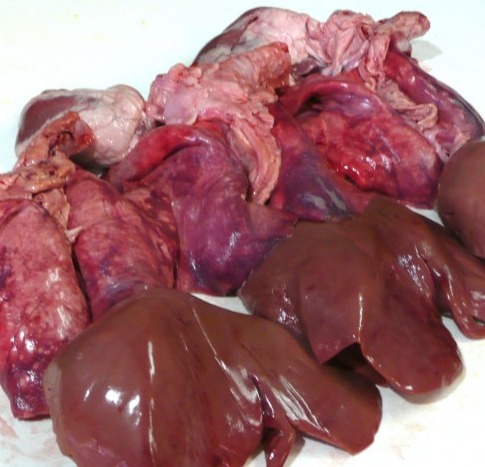
Evisceration is the extraction of the internal organs from an animal during the process of slaughter.
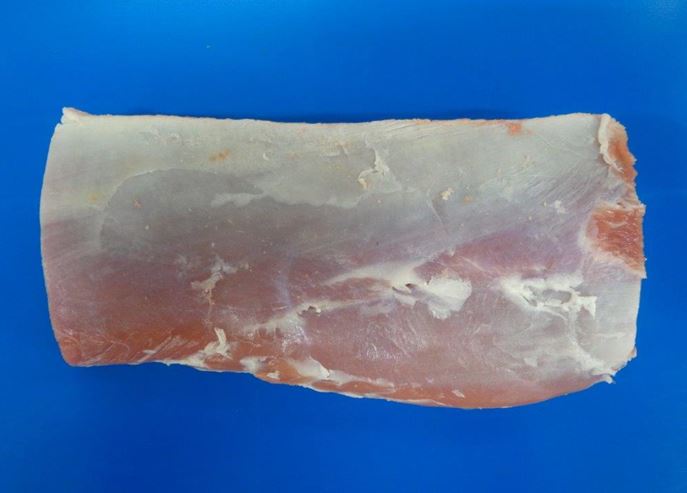
The term “eye muscle” is often used in the context of meat production, particularly in relation to evaluating the quality and yield of meat from livestock. The eye muscle, more formally known as the longissimus dorsi muscle, is a major muscle located along the spine of the animal, running parallel to the vertebral column. This muscle is commonly referred to as the loin or backstrap.
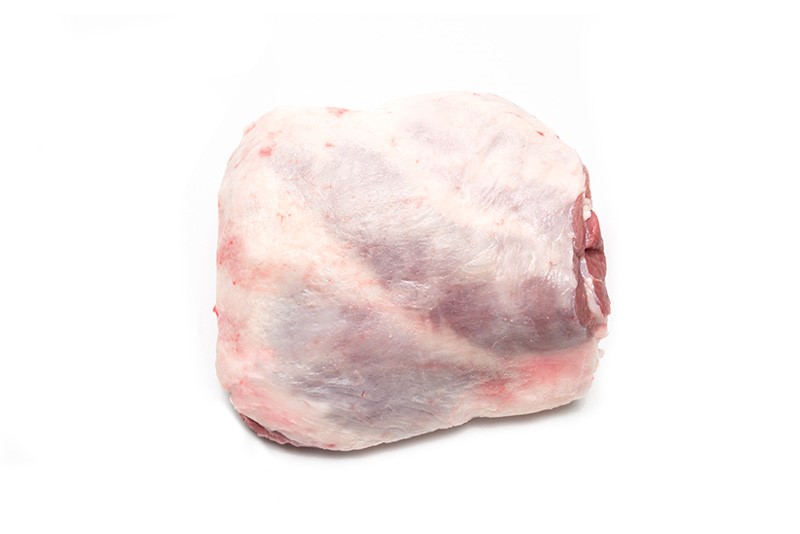
Femur Bone Only
A lamb hind leg with the shank, aitch bone, chump and tail are removed, leaving just the femur bone remaining.
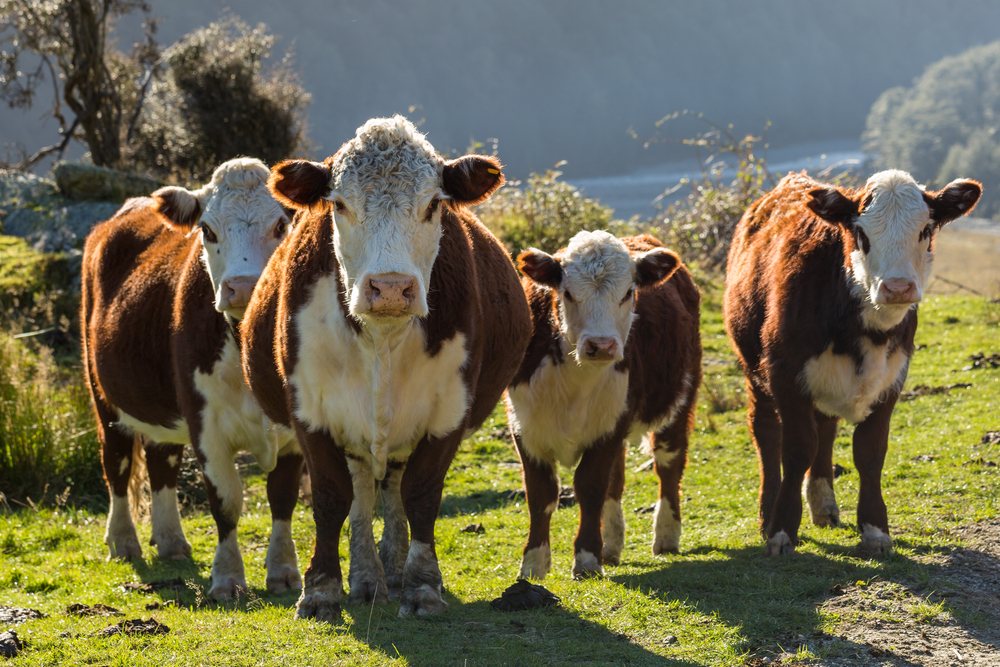
“Fatstock” is a term traditionally used in the livestock industry to refer to animals, particularly cattle, that are raised for meat production and have reached a marketable weight or condition. The term is often associated with animals that are ready for slaughter and processing to produce meat products.

Once Livestock reach market specifications and are ready for processing, they are described as ‘finished’.
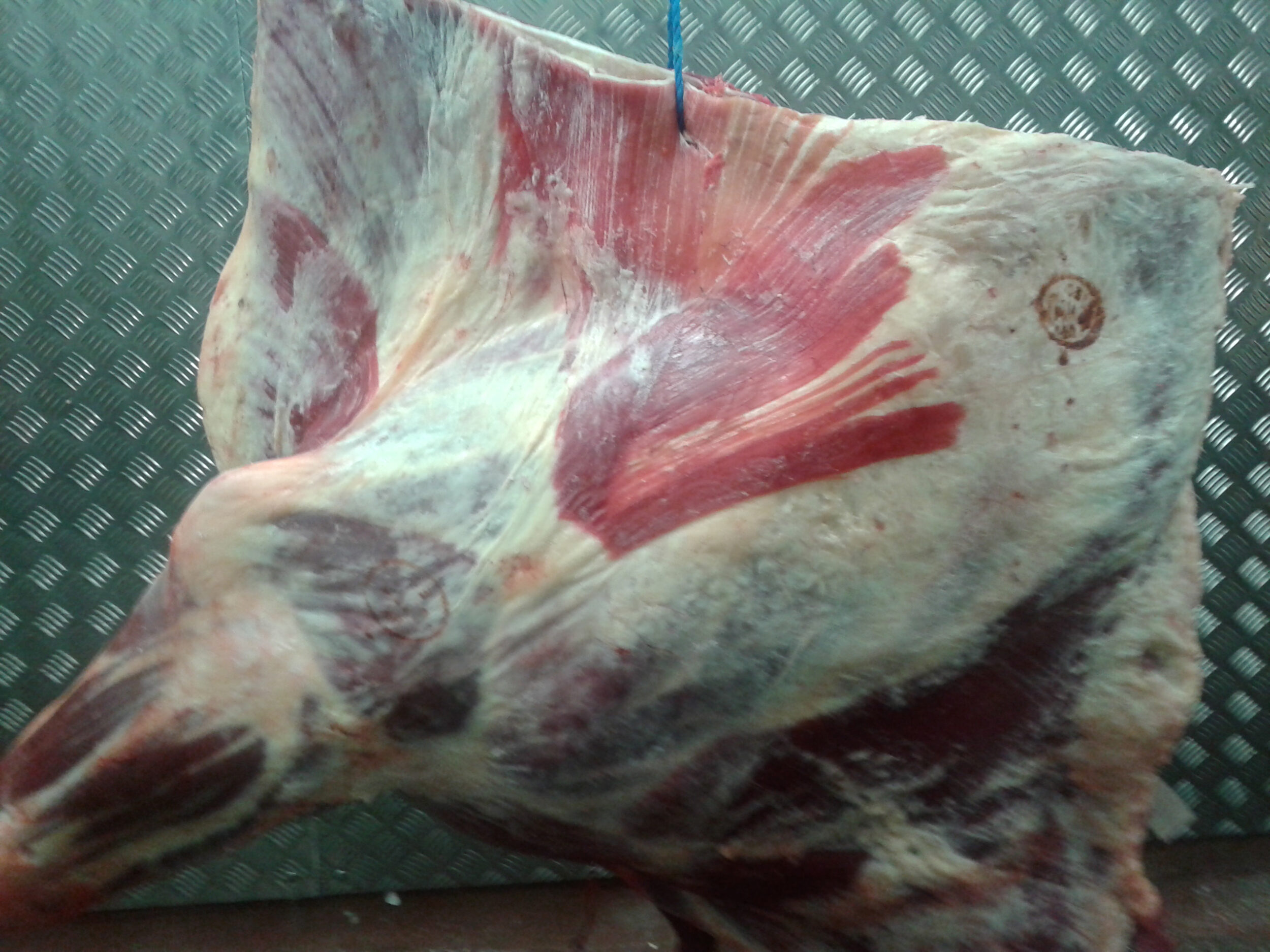
The term “forequarter” refers to the front section of an animal’s carcass, specifically the front half of the body, including the front legs and corresponding meat cuts. In the context of beef or veal, the forequarter typically includes cuts such as the chuck, brisket, shank, and rib.
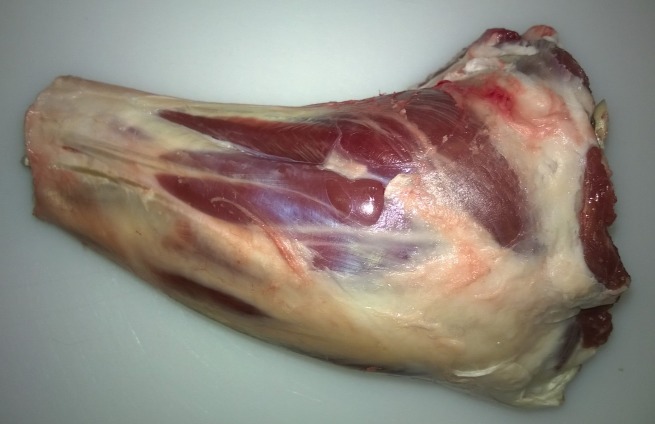
The shank portion of a front leg, including the end of the humerus along with the radius and ulna bones with their associated muscles and connective tissues.

Freezer burn is a condition that occurs when frozen food is exposed to air, leading to dehydration and the oxidation of the food’s surface. It’s characterised by the development of dry, discoloured, and sometimes tough patches on the surface of the frozen item. Freezer burn can affect the quality and taste of the affected food.
While freezer burn doesn’t make food unsafe to eat, it can negatively impact its taste and texture. Trimming away freezer-burned portions before cooking can help improve the overall quality of the food. Proper storage and packaging techniques are essential to reduce the likelihood of freezer burn in frozen foods.

A sophisticated and elegant presentation where the meat is removed from the bottom portion of the bone.
With lamb, pork and beef, it is usually the loin of the animal that is used, and the rib bones that are trimmed.
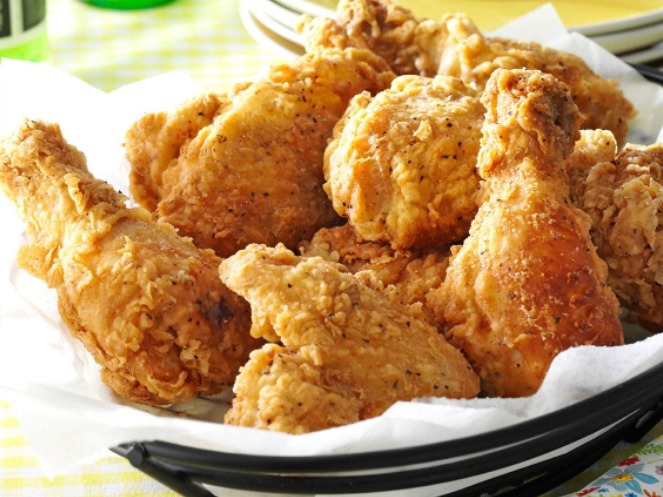
Fried chicken, also known as Southern fried chicken, is a dish consisting of chicken pieces that have been coated with seasoned flour or batter and pan-fried, deep fried, pressure fried, or air fried. The breading adds a crisp coating or crust to the exterior of the chicken while retaining juices in the meat. Broiler chickens are most commonly used.
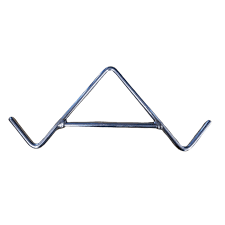
A metal bar placed between the hind legs of a hog carcass to separate the legs and suspend the carcass.
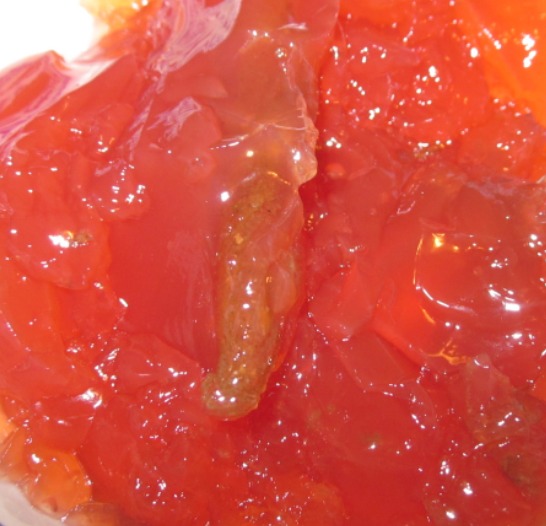
A translucent, collarless, brittle, flavourless, irreversibly hydrolysed form of collagen. It is commonly used as a gelling agent in food. Common sources for production include porcine skin, bovine hides, and animal bones. In the kitchen, gelatin is a common by-product from the production of charcuterie and stocks.
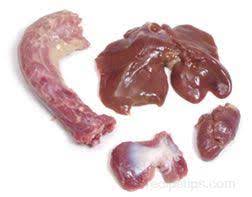
“Giblets” refer to the edible internal organs of poultry, typically chickens and turkeys. These organs are often included with the whole bird when purchased and can be used in various culinary preparations.
Giblets include the heart, liver, gizzard and neck.
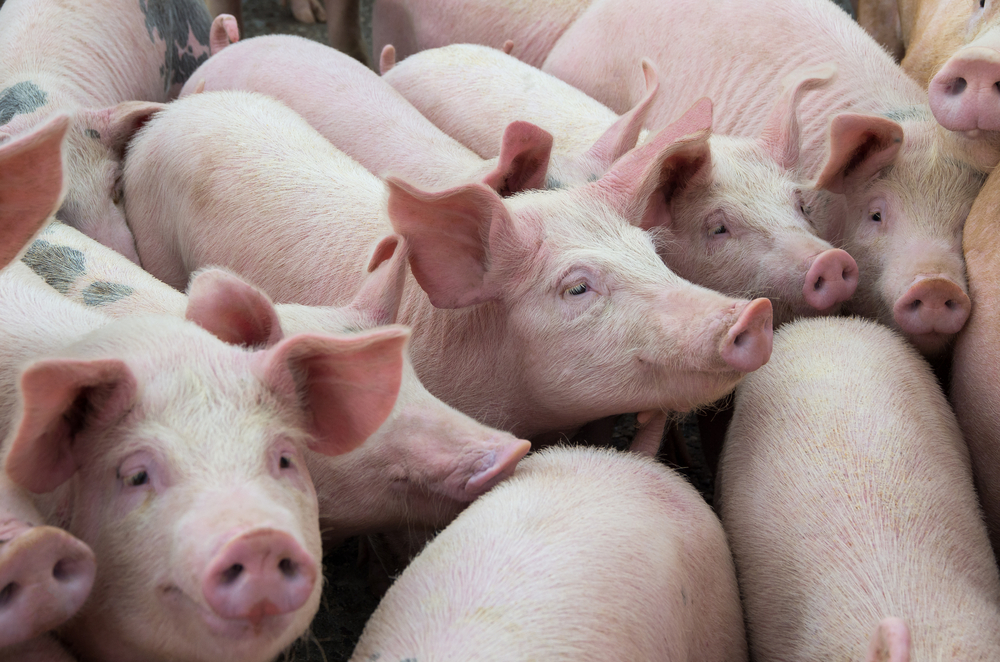
A “gilt” is a term used in the context of swine farming to refer to a female pig that has not yet given birth to piglets and is typically under a year old. Essentially, a gilt is a young, sexually mature female pig that has not yet had her first litter of piglets. Once a gilt has given birth, she is referred to as a “sow.”
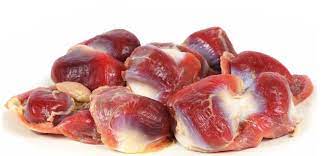
Organ found in the digestive tract of birds, filled with stone or grit used for grinding up food.

(Hazard Analysis Critical Control Point)–A systematic approach to identification of potential food safety hazards, assessing the risk and setting up controls and procedures to prevent problems.
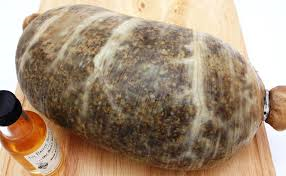
Scotland’s national dish is haggis (sheep’s stomach stuffed with the animal’s minced heart, liver, and lungs).
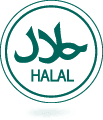
Halal meat refers to meat that is prepared and processed in accordance with Islamic dietary laws, as outlined in the Quran. The term “Halal” means permissible or lawful in Arabic, and it encompasses various aspects of daily life, including food consumption. The guidelines for halal meat production are derived from Islamic teachings.
Halal slaughter, also known as “Dhabiha” or “Zabiha,” is the process of slaughtering animals for halal meat in accordance with Islamic dietary laws as prescribed in the Quran. The procedure involves specific guidelines for the ritualistic preparation of meat, making it permissible for consumption by Muslims.

Lamb, venison or pork chump on leg.
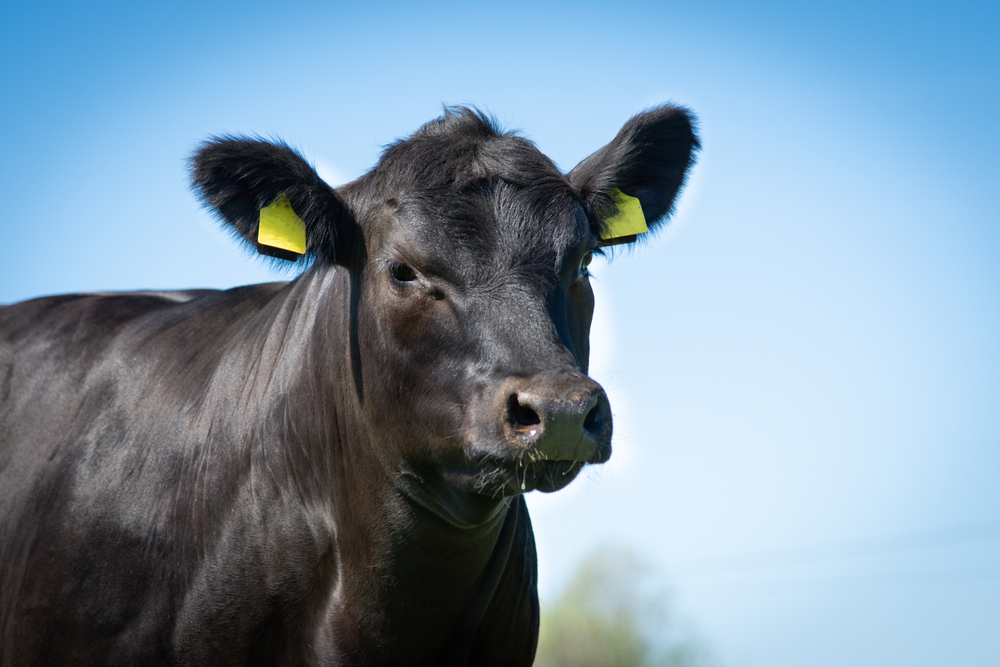
A heifer is a young female cow that has not yet given birth to a calf. The term “heifer” specifically refers to a female bovine that is typically between the ages of one and two years old and has not yet reached maturity for reproduction.
Once a heifer gives birth to her first calf, she is generally referred to as a “cow.” The term “heifer” is used to distinguish between young female cattle that have not yet entered into the reproductive stage and mature, breeding-age females.
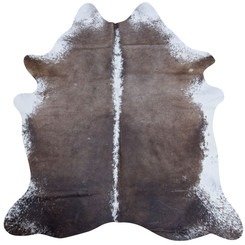
Refers to the whole skin or pelt from one of the larger animals (cattle, etc.). Pelts from smaller or younger animals are usually referred to as skins.
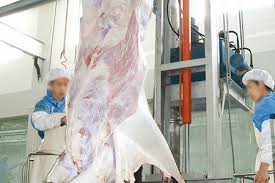
A device used to remove the hide by attaching a chain to the hide and pulling it either up or down away from the carcass.
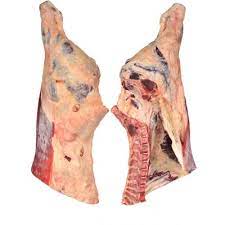
The rear half of a beef carcass side composed of the loin, flank, and round. Usually separated form the forequarter by a cut between the 12th and 13th ribs (the last two ribs).
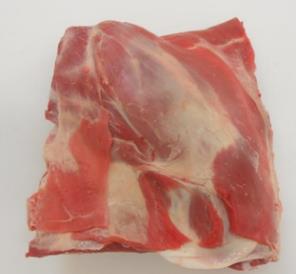
Hogget is sheep meat between 1-2 years old. This tends to be produced from the slow growing hill breeds as they often do not fatten in time to be classed as lamb. Hogget is delicious and benefits from the tenderness of a relatively young animal along with some of the richer flavour of older sheep meat.
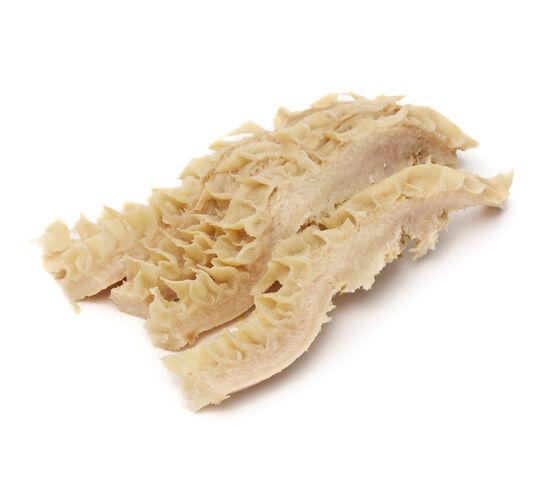
The lining of the second compartment (reticulum) of the ruminant stomach which has honeycomb.
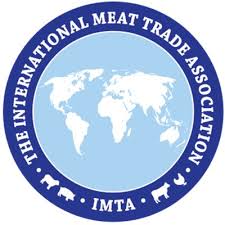
IMTA is a UK trade association, representing predominantly UK companies importing and exporting meat. Our goal is the facilitation of the trade in meat ensuring UK consumer choice, food security and carcass balance through import and export. IMTA provides leading trade expertise on UK trade policy including on customs, tariffs, quotas, rules of origin, WTO, trade agreements, SPS conditions and market access.
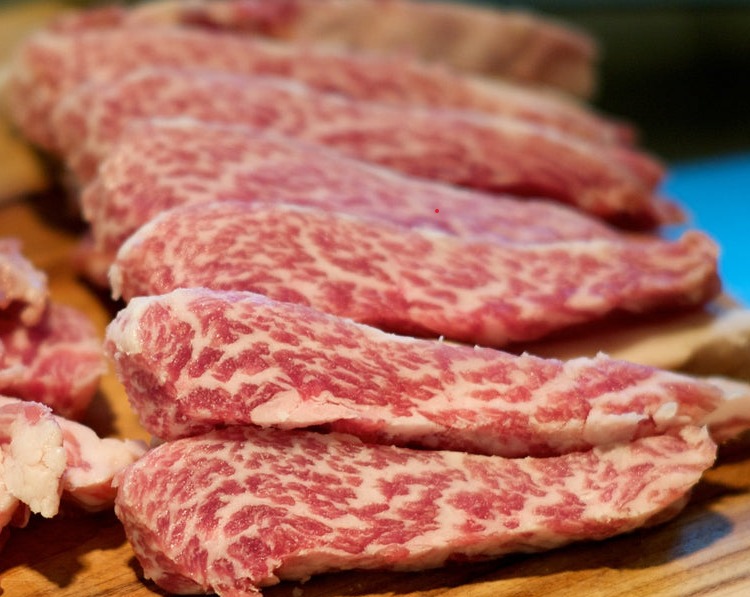
A very old strain of black-skinned pigs with very little hair. The adult has slender legs and a very long snout. Iberico pigs also have a high fat content. The large amount of fat covering each ham, enables the meat to be cured for a much longer period, resulting in a much more complex, intense flavour.
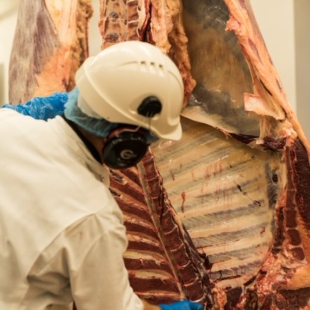
Proof of inspection that the harvested animal is fit for human consumption.

This is a lean tender cut of beef from the shoulder used for braising, also know as the bullet muscle.
not to be confused with beef fillet from the hind quarter that is a pan frying or grilling cut.
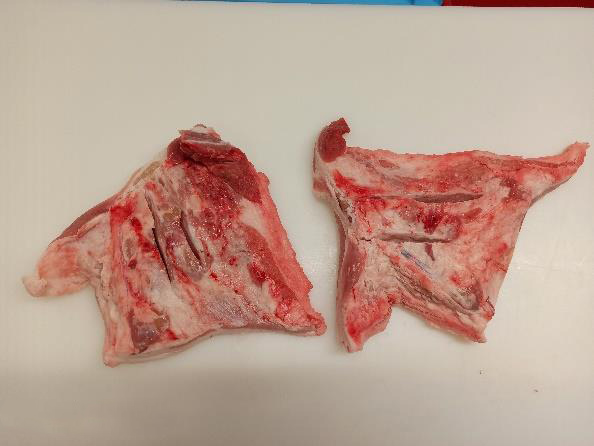
A wholesale cut of the pork carcass which includes the cheek muscle and fat skin surrounding it .
The jowl is a cut of meat that comes from the cheeks and jaw of an animal, typically a pig. It is a fatty and flavoursome cut that is often used in various culinary traditions for its rich taste and unique texture.
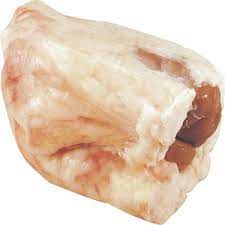
The rounded structure of the kidney and the surrounding fat.
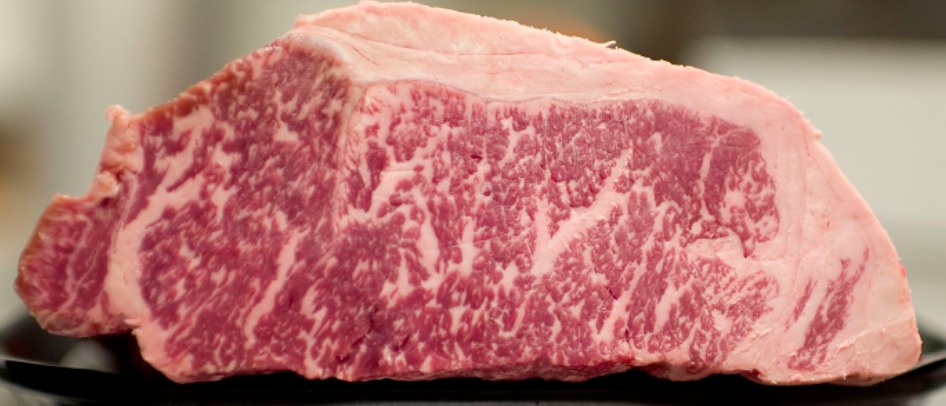
Kobe beef is a highly prized and sought-after type of beef that comes from Wagyu cattle raised in the Kobe region of Japan. Wagyu is a breed of cattle known for its exceptional marbling, tenderness, and flavor due to its genetic predisposition to produce a high percentage of intramuscular fat.
Harvested from an ancient stock of cattle called “kuroge wagyu” (black haired Japanese cattle). It is raised exclusively in Hyogo Prefecture, of which Kobe is the capital. Kobe beef is considered the most exclusive beef in the world. True Kobe beef is not available outside of Japan due to Japanese export restrictions.
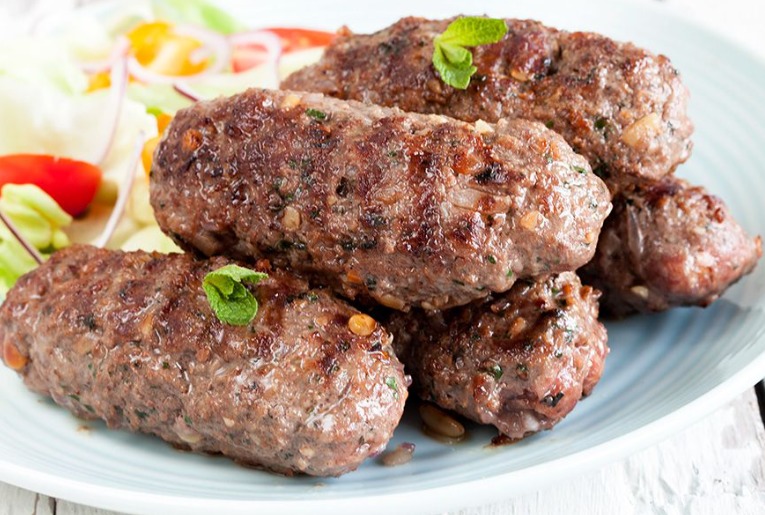
A Middle Eastern and South Asian meatball or meatloaf. They consist of balls of minced or ground meat, usually beef or lamb, mixed with spices and or onions. They are often shaped into meatballs which are prepared with a mixture of ground meat, rice, leeks and some other ingredients.
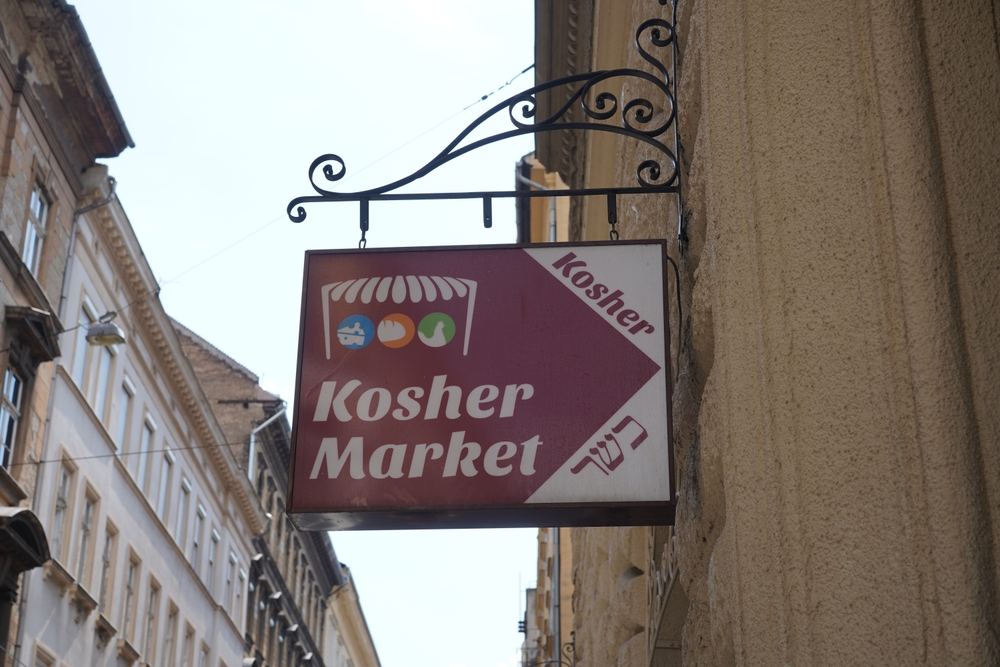
Kosher slaughter, known as “shechita,” is a method of ritual slaughter in accordance with Jewish dietary laws (kashrut). The process is governed by specific religious rules and regulations outlined in traditional Jewish texts, including the Torah and Talmud. Kosher slaughter is designed to ensure the humane and kosher preparation of meat for consumption by Jewish communities.
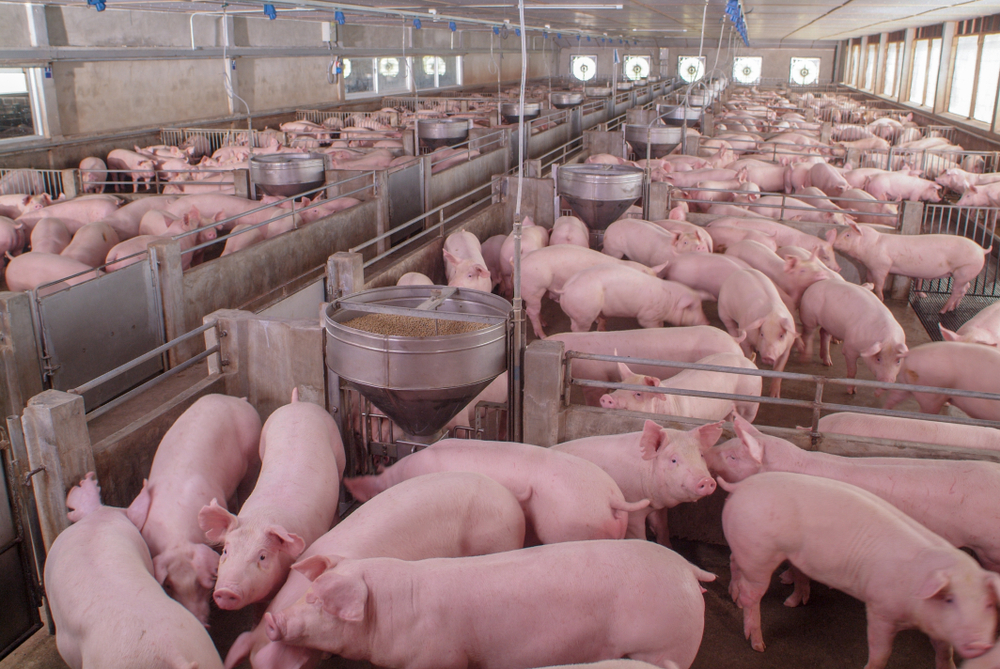
“Lairage” refers to the holding or resting area provided for livestock, especially cattle, pigs, or sheep, immediately before they are slaughtered in an abattoir (slaughterhouse). The purpose of lairage is to allow the animals to rest, recover from transportation stress, and acclimate to their surroundings before being processed for meat production.
Effective lairage management is a critical component of humane and responsible meat production. It ensures that animals are treated with care and respect throughout the pre-slaughter process, contributing to both animal welfare and the quality of the final meat products.
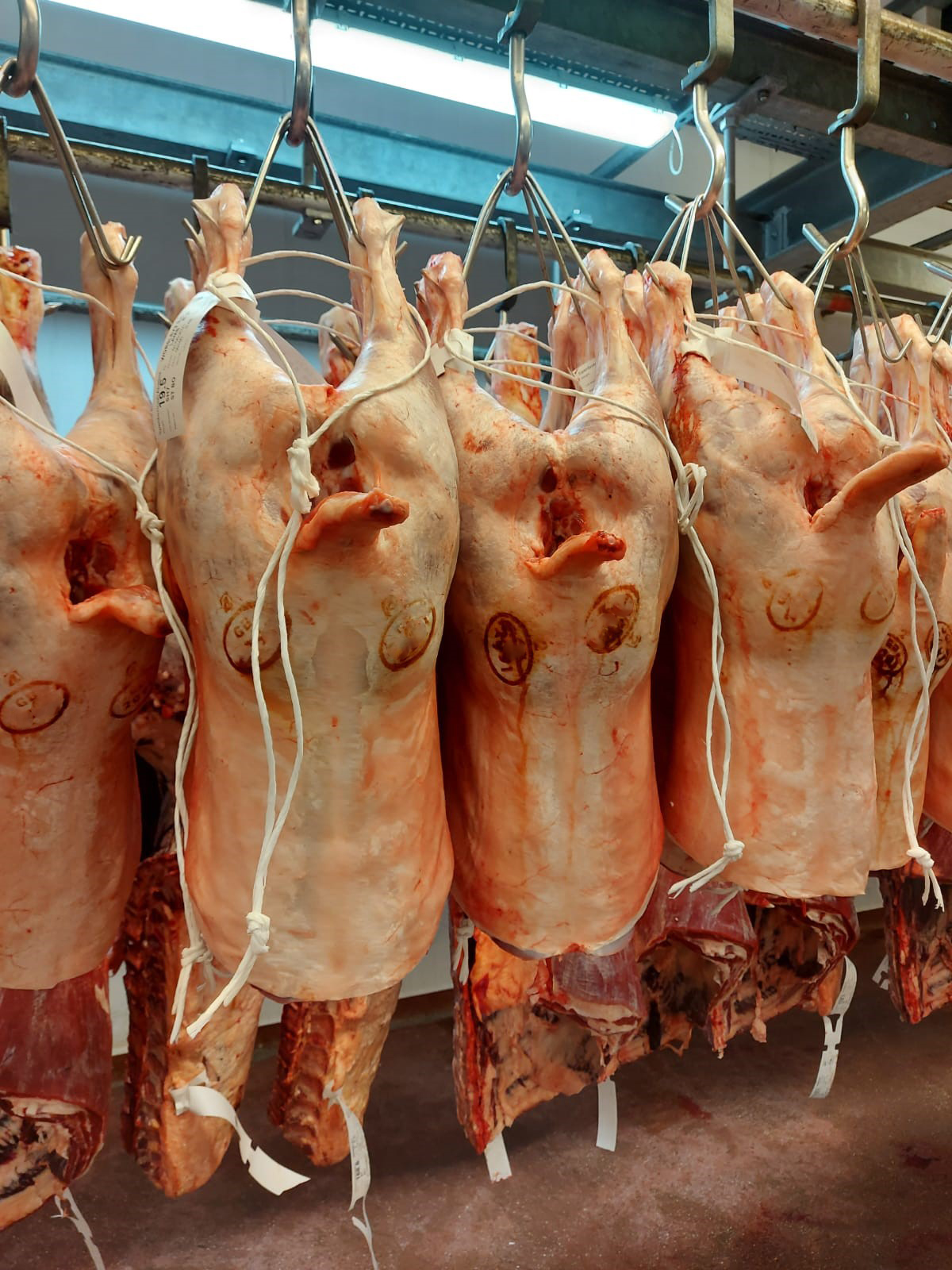
Lamb is classed as young sheep meat under 1 year old; the animals are still classed as lamb until they have grown their first incisors. This meat is delicate in flavour and tender in texture.
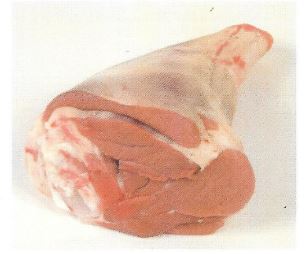
Lamb shank, a cut from the shin of the lamb, is one of the most flavoursome cuts of lamb. The connective tissue, which gives lamb shank its flavour, also leads to toughness if not prepared correctly. Lamb shank needs to be cooked over low heat for a long time to become velvety, flavoursome, and fall-off-the-bone juicy.
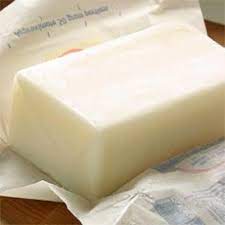
Lard is simply Pork fat that has been rendered (cooked down) to remove impurities. The culinary qualities of lard vary somewhat depending on the origin and processing method; if properly rendered, it may be nearly odourless and tasteless.
Rendered beef or sheep fat is called tallow.
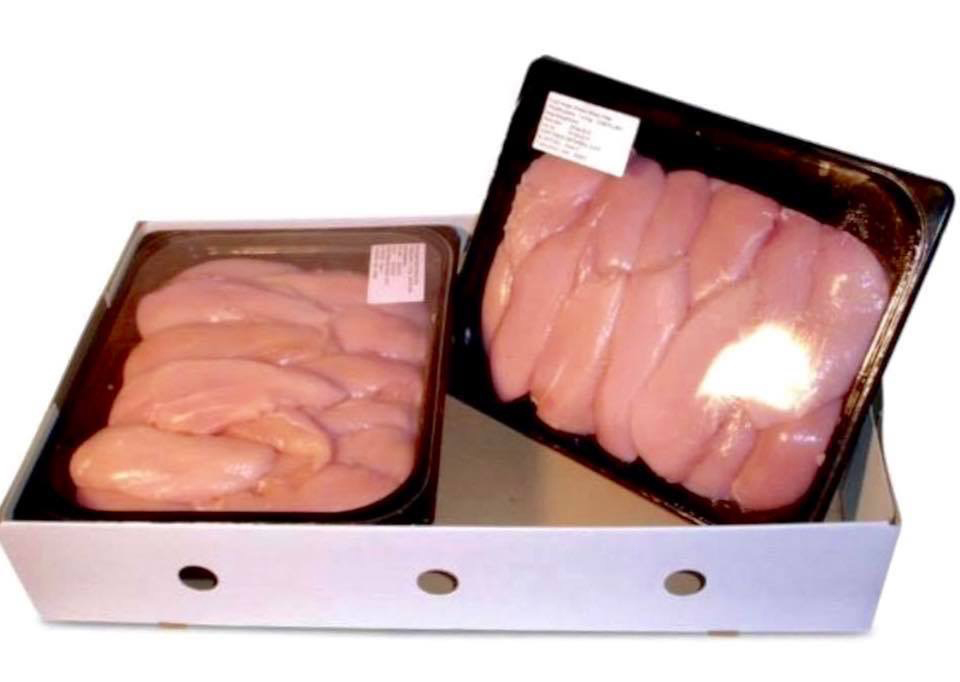
Modified Atmosphere Packaging (MAP) or gas flushing is a proven and natural method of extending the shelf life and quality of food products. It uses a specific single gas or a mixture of gases to create a protective atmosphere around the food. This protective atmosphere, combined with appropriate packaging material and, in many cases, lowered temperatures, preserves the taste, safety and appearance of the food for longer.
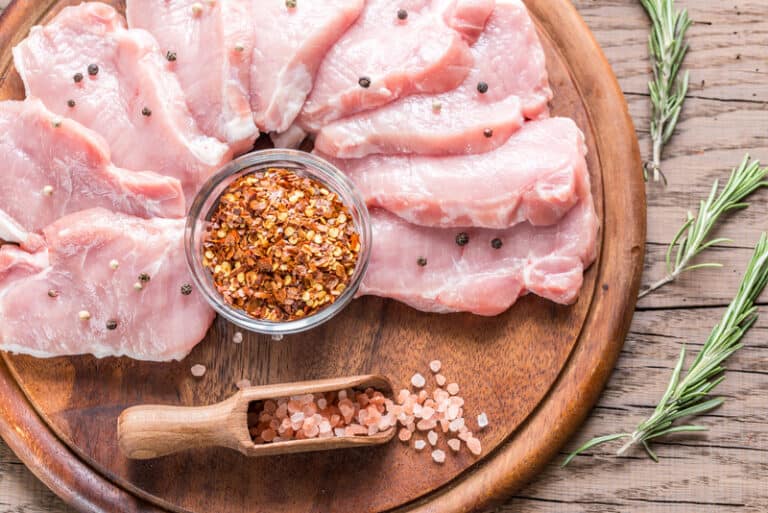
Medallions are when the eye of the loin is trimmed totally of all fat and silver skin to leave just a perfectly lean cut of meat.
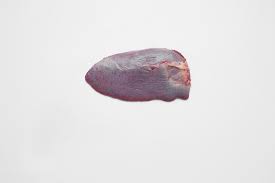
Industry terminology for spleens. The large organ in the upper left abdomen lying near or across the surface of the stomach. Modifies and regulates the cellular components of blood.

Oxidised form of the protein myoglobin, which is found in meat and contributes to its colour. Responsible for the browning of meat after cutting. Also occurs in a different form in the hip muscles of beef, where rainbow-like colours appear from the reflection of light.
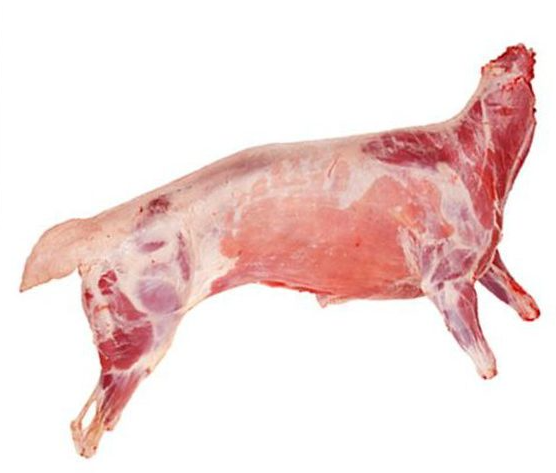
The meat of a mature sheep is called mutton, and it’s basically the same as lamb, though it can be slightly tougher, with a more pungent flavor, but still appetizing. In fact, mutton used to be a mainstay on menus across Europe and the United States. This lamb is a particularly good meat type for long and slow cooking and can stand up to strong spices. Mutton is still served frequently in the United Kingdom, Ireland, and India, and when cooked adequately it makes a wonderful meal.
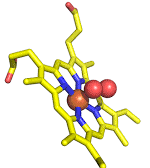
One of two proteins producing the colour or pigment of the muscles. Myoglobin quantity varies with species, age, sex, muscle, and physical activity of muscle.
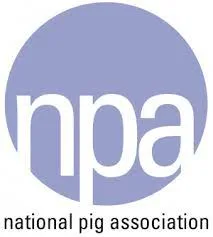
The National Pig Association (NPA) is the representative trade association for the British pig industry. It is allied to the National Farmers’ Union (NFU) and represents the pig interests of NFU members. The NPA is based in Stoneleigh Park, Warwickshire, and its members represent around 70% of the British pig industry.
The association works closely with the industry’s monthly trade journal, Pig World, and is involved in various activities to support British commercial pig producers. The NPA also organizes events and provides information and support to its members.
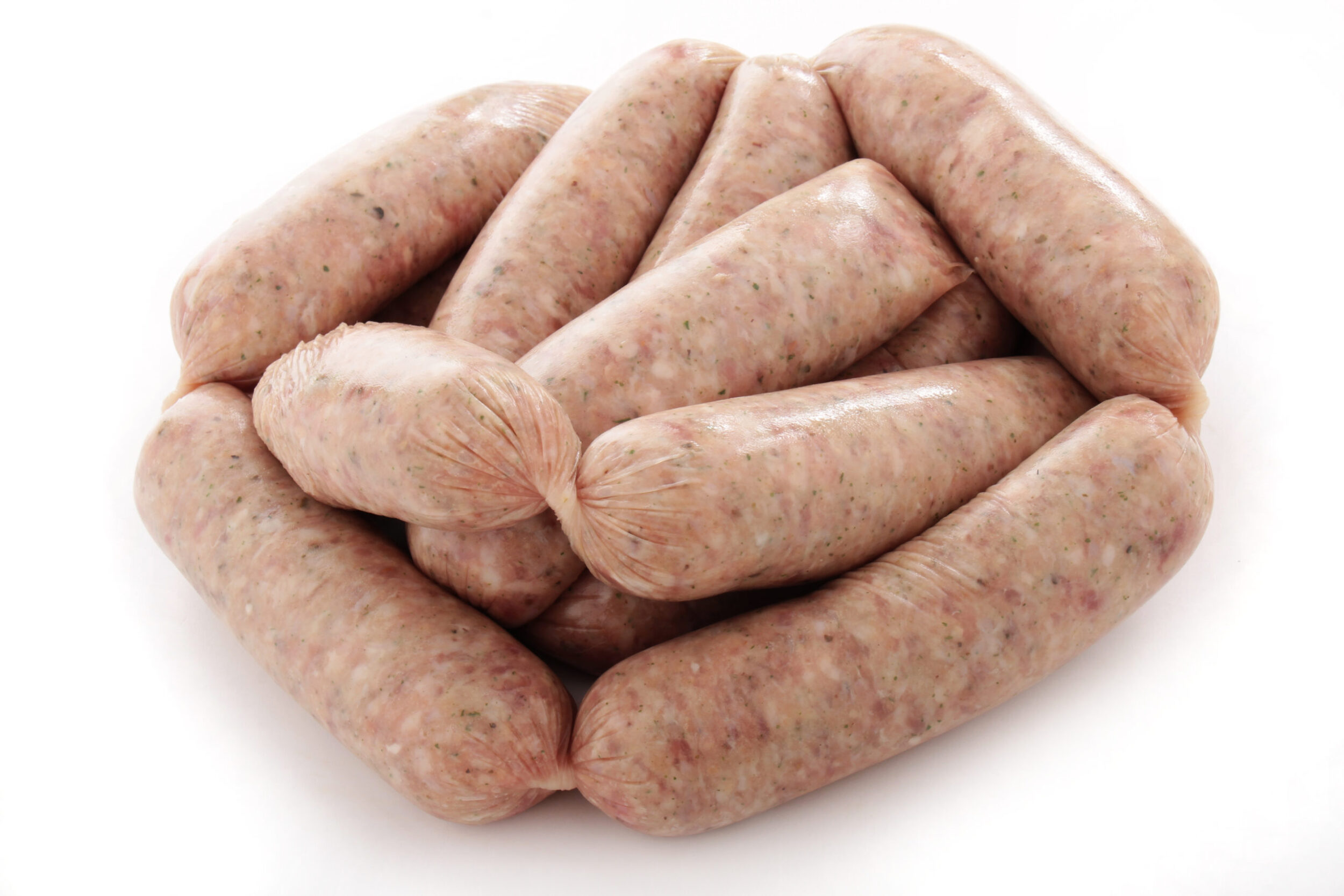
Natural sausage casings come from the intestines of animals such as pigs, sheep, and cattle.
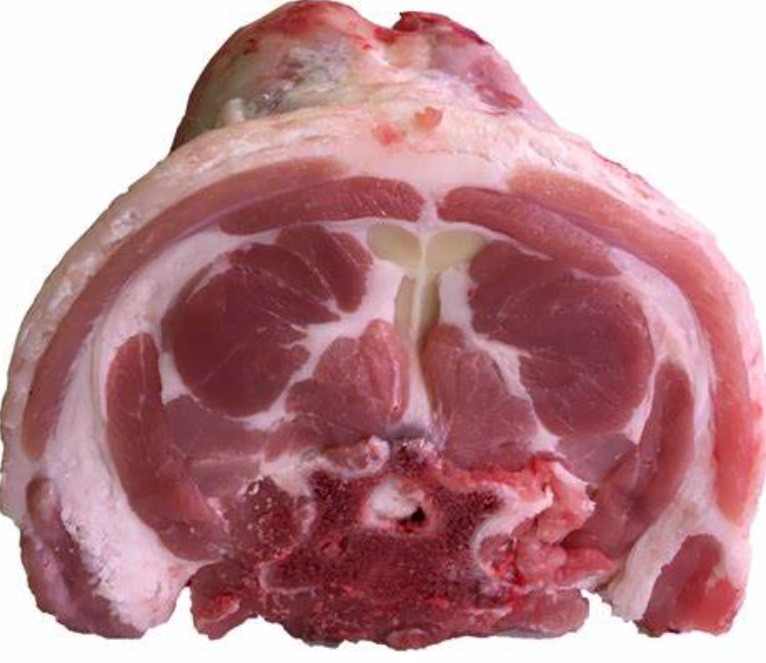
Middle neck is a portion of the animal behind the scrag end that reaches about a third of the way down the back of the animal. Both the scrag end and the middle neck contain lots of bones from the spine and a high proportion of connective tissue and fat. Although they can be cooked with the bone in, it is possible to take the bone out and roll the remaining meat into a joint for oven roasting.
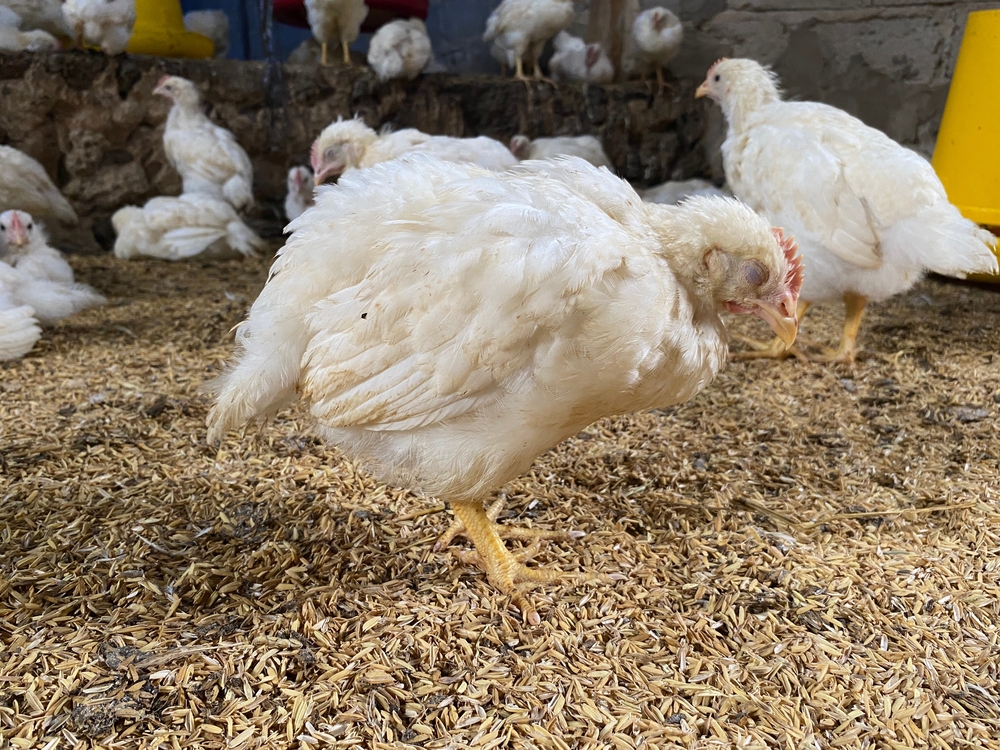
Newcastle disease (ND) is a highly contagious and often severe disease found worldwide that affects birds including domestic poultry. It is caused by a virus in the family of paramyxoviruses.
The disease appears in three forms: lentogenic or mild, mesogenic or moderate and velogenic or very virulent, also called exotic Newcastle disease. The lentogenic strains are very widespread, but cause few disease outbreaks.
It usually presents as a respiratory disease, but depression, nervous manifestations, or diarrhoea may be the predominant clinical form.
ND, in its highly pathogenic form, is a disease listed in the World Organisation for Animal Health (WOAH) Terrestrial Animal Health Code and must be reported to the WOAH (WOAH Terrestrial Animal Health Code).
Transmission and spread
ND is transmitted most often by direct contact with diseased or carrier birds. Infected birds may shed the virus in their feces, contaminating the environment. Transmission can then occur by direct contact with feces and respiratory discharges or by contaminated food, water, equipment, and human clothing. Newcastle disease viruses can survive for several weeks in the environment, especially in cool weather.
Generally, virus is shed during the incubation period and for a short time during recovery. Birds in the pigeon family can shed the virus intermittently for a year or more. Other wild birds such as cormorants have also been shown to have caused outbreaks in domestic poultry.
The virus is present in all parts of the carcass of an infected bird.
The disease is very contagious. When the virus is introduced into a susceptible flock, virtually all the birds will be infected within two to six days.
Public health risk
Newcastle disease is a minor zoonosis (disease of animals that can also infect humans) and can cause conjunctivitis in humans, but the condition is generally very mild and self limiting.
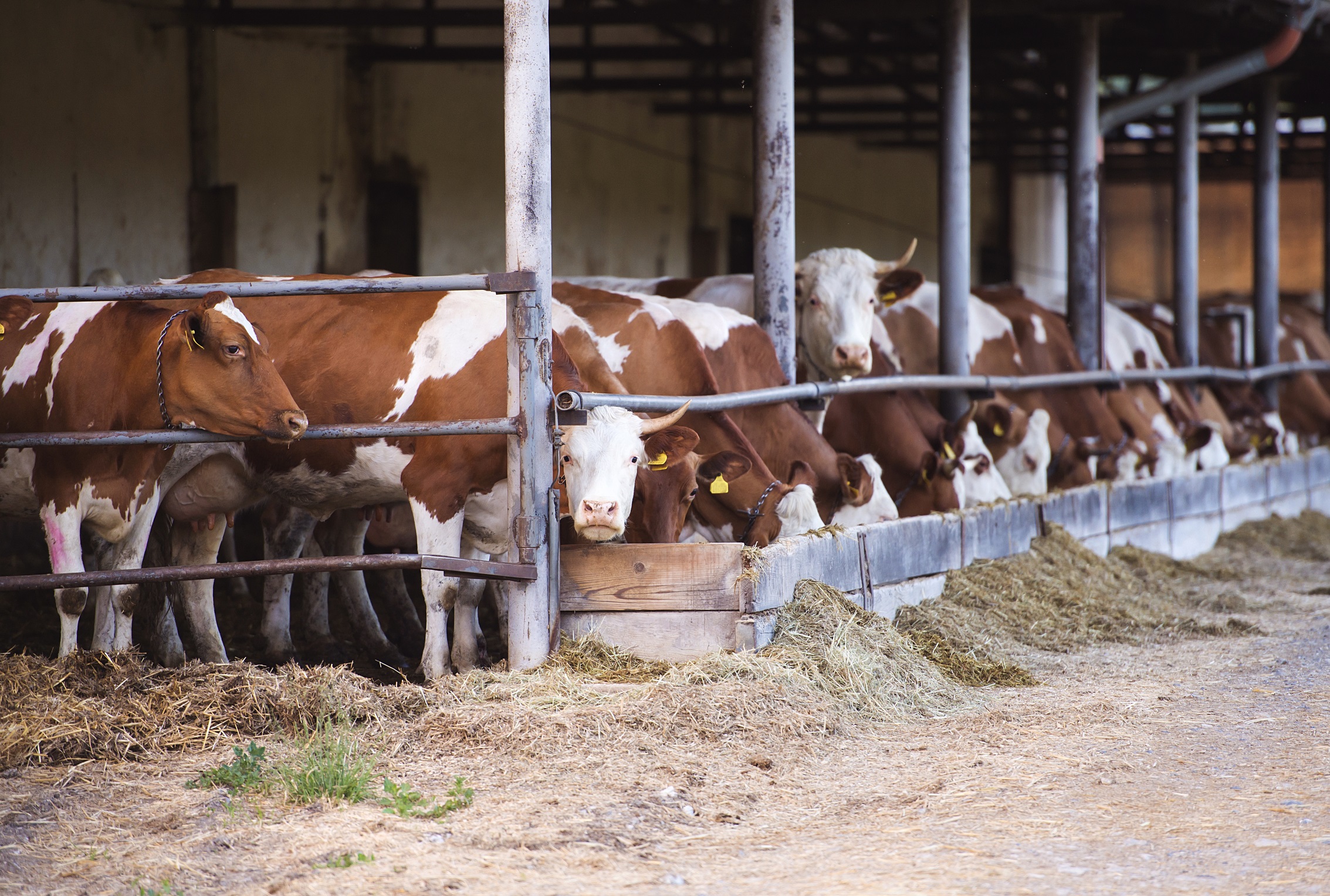
Over Thirty Months –
Until November 2005, cattle could not be sold for food if they were aged over 30 months, as BSE did not develop fully in cattle until they were older. This was called the Over Thirty Months Rule. An additional control was also introduced banning the process of recovering meat mechanically from the bones of cattle.

Offal refers to the internal organs and entrails of butchered animals, especially those organs that are considered edible. Offal is a term commonly used in the context of meat processing and consumption, and it includes a variety of organ meats that may have distinct flavours and textures. The consumption of offal has cultural and culinary significance in various cuisines around the world.
Examples of offal include:
- Liver: The liver is a nutrient-rich organ that is commonly consumed in many cuisines. It is known for its distinct flavour and is often used in dishes like liver pâté or liver and onions.
- Kidneys: Kidneys are another organ commonly consumed in various culinary traditions. They can be prepared in stews, curries, or grilled dishes.
- Heart: The heart is a muscular organ that is eaten in some cultures. It can be prepared in stews, grilled, or used in sausages.
- Tripe: Tripe refers to the stomach lining of animals, often from cattle or sheep. It is used in soups, stews, and dishes like menudo.
- Sweetbreads: Sweetbreads are the thymus or pancreas glands of animals. They are considered a delicacy in many cuisines and are often pan-fried or grilled.
- Brains: Brains, particularly from animals like cows or pigs, are consumed in certain dishes. They can be fried, scrambled, or used in soups.
- Tongue: Tongue is a muscular organ that is often used in various dishes, such as tacos de lengua in Mexican cuisine or beef tongue sandwiches.
- Oxtail: While not a traditional organ, oxtail refers to the tail of cattle and is often included in the category of offal. It is used in stews and braised dishes.

Organic meat refers to meat produced from animals raised under organic farming practices, which adhere to specific standards and regulations designed to promote environmentally friendly and humane agricultural practices. Organic meat production encompasses various factors, including animal welfare, feed quality, and the use of synthetic inputs.
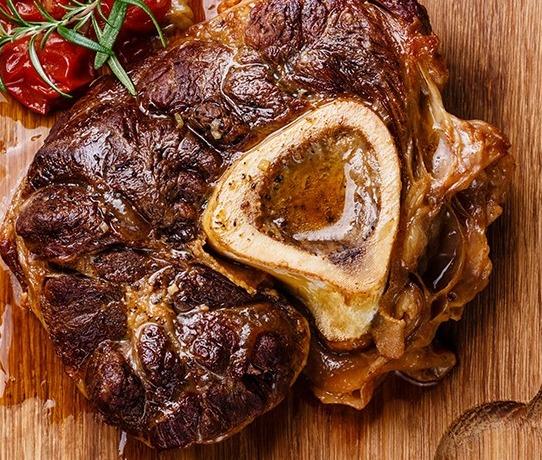
Ossobuco is a classic dish from the Lombard region of Italy, particularly associated with Milan. It consists of cross-cut veal shanks that are braised with vegetables, white wine, and broth.
The dish is traditionally garnished with gremolata, which is a mix of chopped parsley, garlic, and lemon zest, and is often served with risotto alla milanese or polenta, depending on regional preferences.
The name “ossobuco” translates to “bone with a hole” in Italian, referring to the marrow hole at the center of the shank.
This dish is celebrated for its rich flavors and the tender texture of the meat when cooked properly. It’s a hearty and satisfying meal that’s perfect for a special occasion or a comforting dinner.
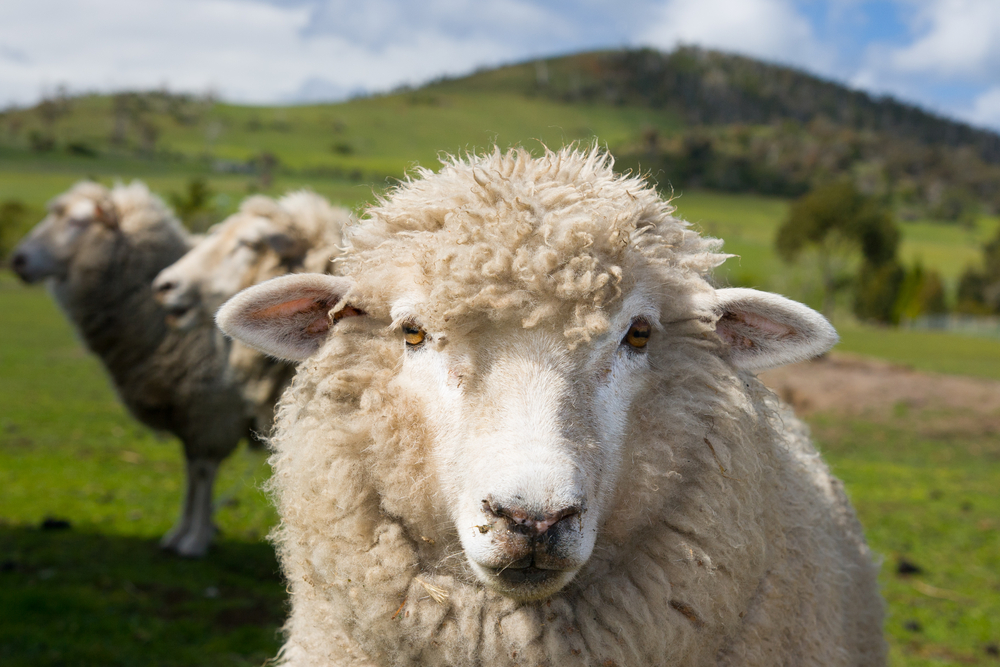
“Ovine” is a term used to refer to anything related to sheep. It is an adjective that describes the characteristics, behaviours, or products associated with sheep.
Products derived from sheep may also be described as ovine. For example, ovine wool refers to wool obtained from sheep.
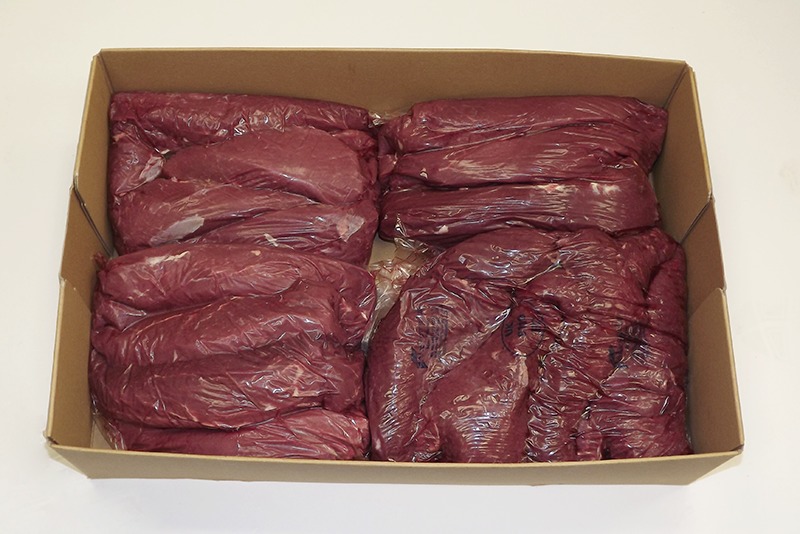
Pret A Decoupe. The meat has been de-fatted and is ready to slice or dice.
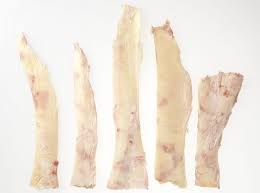
The common name for the nuchal ligament of cattle and sheep. The nuchal ligament is a thick, elastic band of tissue that connects the back of the head to the neck.
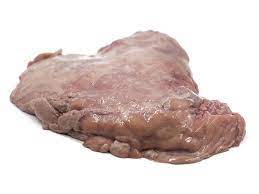
The gland, located in the duodenal loop, that secretes the glucose regulating hormone, insulin. It also secretes digestive enzymes for fat (lipase), starch (amylase), and protein (trypsin). This organ, in swine, is called the “false” sweetbreads and is used by the pharmaceutical industry for insulin production.
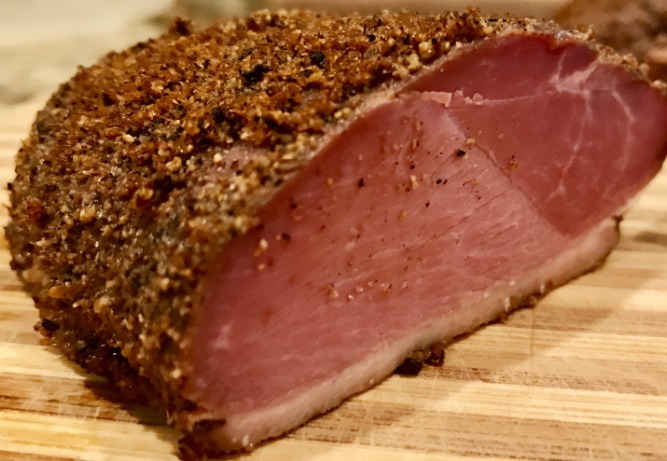
Pastrami is a highly seasoned and cured meat product, typically made from beef, although it can also be prepared from other meats like pork, mutton, or turkey.
The preparation process involves brining, seasoning, and smoking the meat, resulting in a flavourful and tender product that is often thinly sliced and used in sandwiches or other dishes.

The patella, commonly known as the kneecap, is a small, flat, and rounded triangular bone located at the front of the knee joint.
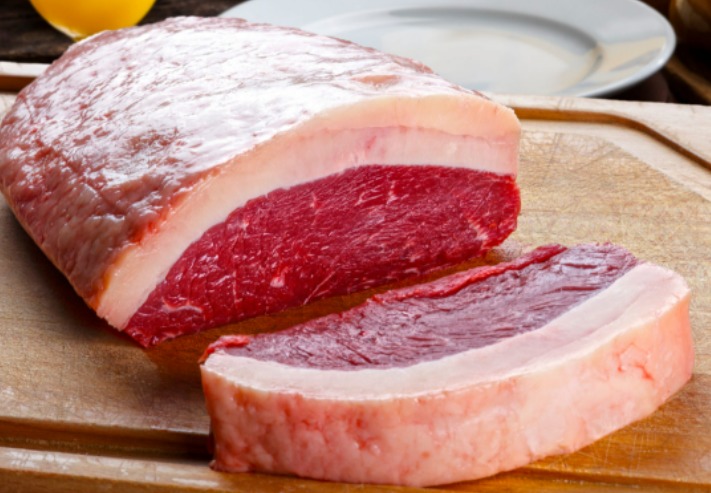
Picanha beef is cut from the rump cap and is the most prized cut of meat in Brazil and incredibly popular across both Latin America and Portugal.
Picanha makes a fantastic BBQ cut or roasting joint. A decent amount of fat coverage to keep it moist, whilst packing plenty of flavour.

The term “pluck” in the context of meat refers to the internal organs, particularly the heart, liver, and lungs of animals, often poultry or game birds. The pluck is sometimes also referred to as the “offal.”
In culinary traditions, various cultures have different ways of preparing and consuming pluck or offal. It can be used in a variety of dishes, such as sausages, pâtés, stews, or even grilled preparations.
The pluck may also be used in traditional dishes like haggis in Scottish cuisine, which involves a mixture of minced heart, liver, and lungs combined with oats, suet, and seasoning, all encased in a sheep’s stomach.
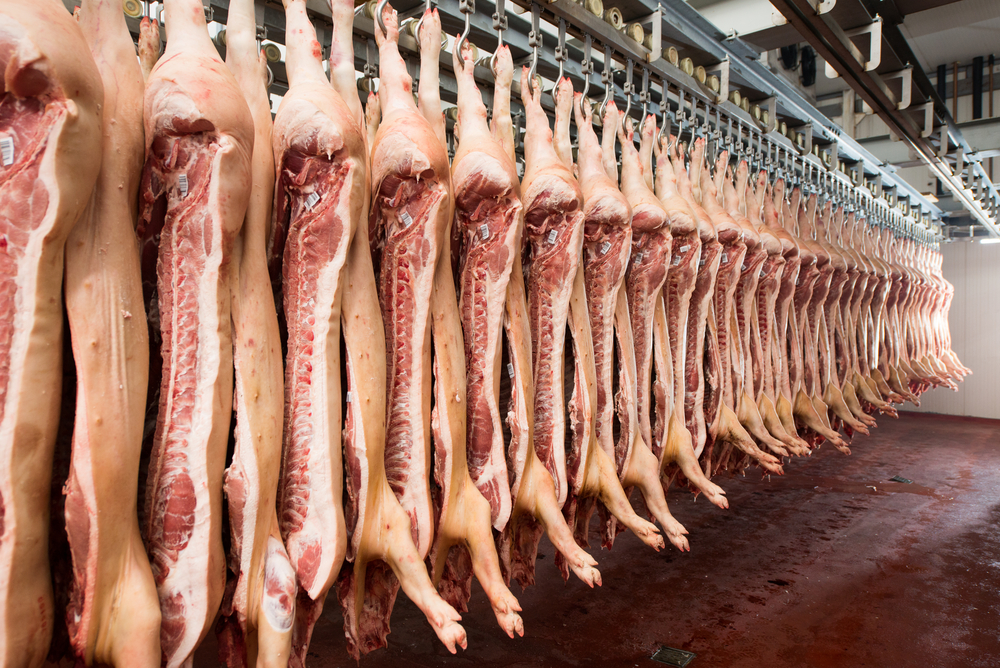
The term “pork” comes from the Old French word “porc,” which refers to a pig or swine. The Old French term, in turn, has its roots in the Latin word “porcus,” meaning “pig” or “hog.” As French and Latin were languages of influence in medieval England, the Norman Conquest of 1066 played a role in introducing the term “pork” to the English language.
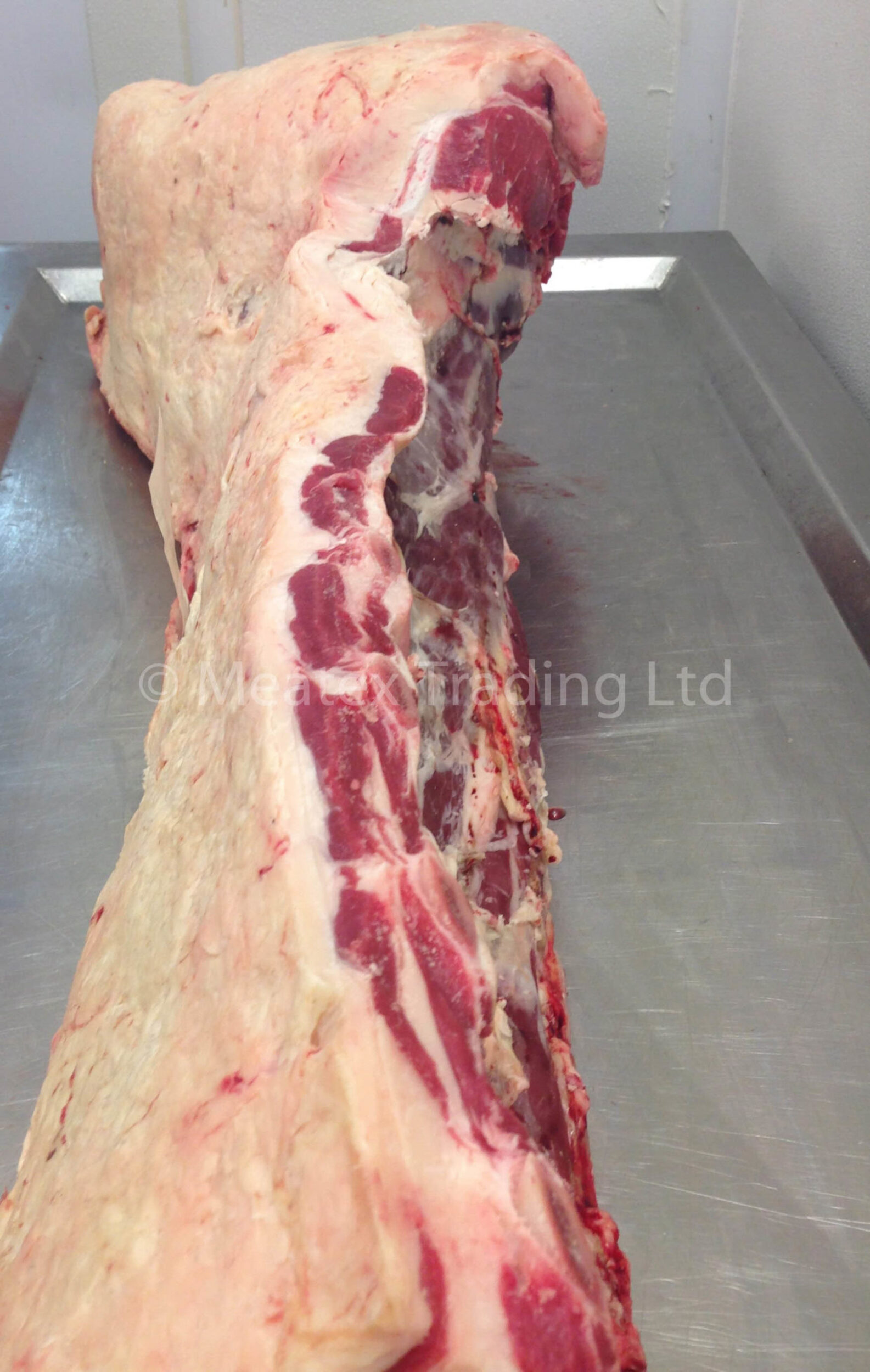
Basic major cuts that result from cutting carcasses and sides into smaller portions.

“Prime cattle” refers to high-quality, well-finished cattle that are typically raised for meat production. The term is commonly used in the context of the beef industry and grading systems to identify cattle that yield beef of exceptional quality.
The criteria for determining prime cattle and beef quality can vary between countries and regions. The grading systems and specific attributes considered may differ, but the term “prime” consistently denotes beef of exceptional quality.
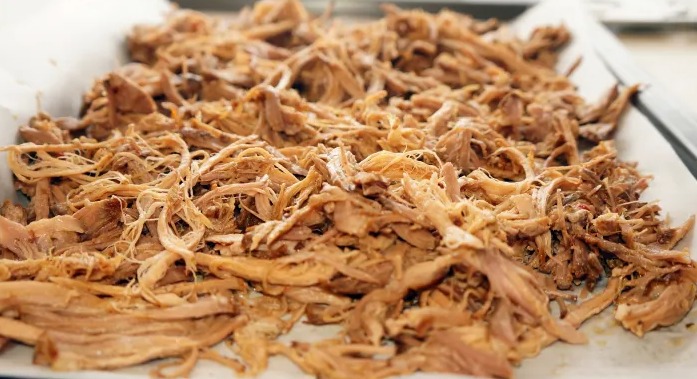
“Pulled pork” refers to a method of cooking and serving pork, typically from the shoulder or “butt” region of the pig, though it can also include other cuts like the pork shoulder. The term “pulled” comes from the way the cooked meat is shredded or “pulled” into small, flavourful pieces.
The process of making pulled pork generally involves the following steps:
- Seasoning: The pork is often seasoned with a dry rub or wet marinade before cooking. Common seasonings include a mix of spices such as paprika, garlic powder, onion powder, brown sugar, and other flavour enhancers.
- Slow Cooking: Pulled pork is traditionally cooked slowly at a low temperature, often in a smoker or a slow cooker. The slow cooking process allows the collagen in the meat to break down, resulting in tender and flavourful pulled pork.
- Shredding: Once the pork is thoroughly cooked and tender, it is typically shredded or pulled apart using forks or other utensils. This process creates strands of succulent, flavourful meat.
- Serving: Pulled pork is often served as a filling for sandwiches, tacos, or wraps. It can be accompanied by barbecue sauce, coleslaw, or other toppings and sides.
Pulled pork is a popular dish in barbecue traditions, and regional variations in preparation and serving styles exist. It is a favourite at barbecues, picnics, and gatherings, appreciated for its tenderness and the ability to showcase various flavour profiles depending on the seasonings and cooking methods used.
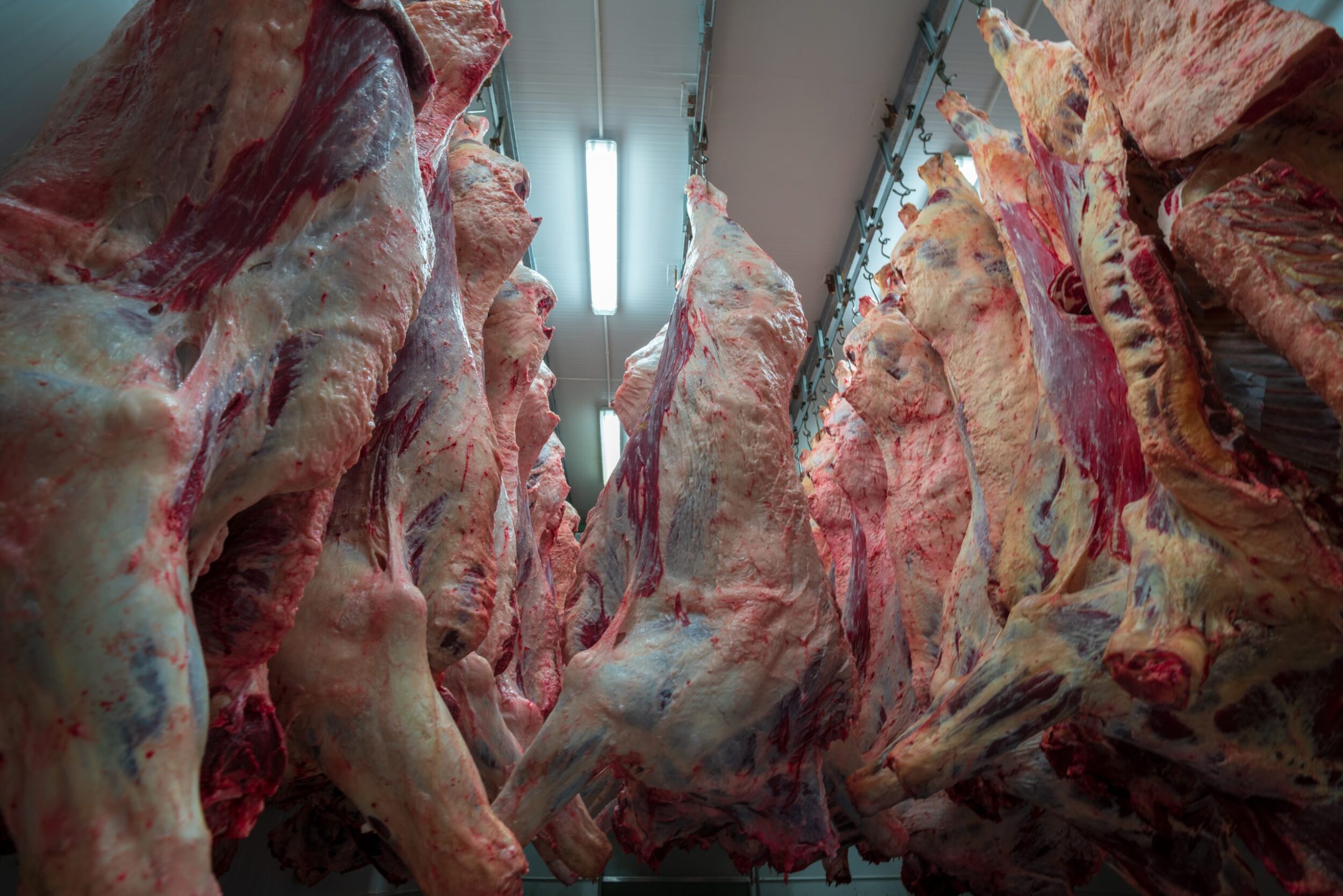
Potential hydrogen; the acidity or alkalinity of a solution. A scale is used to measure the level of pH in meat carcasses [0 = acidic or dry – 7 is neutral – 14 = alkaline or moist). A living unstressed animal would indicate a 6.5 pH prior to death.
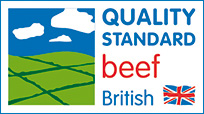
The Quality Standard Mark (QSM) scheme, which is fully funded by the AHDB, was launched in 2004 as an assurance scheme with requirements which have a positive impact on meat quality such as age specifications for cattle and sheep and maturation times.
AHDB is to wind down the scheme for the beef and lamb sectors in March 2022.
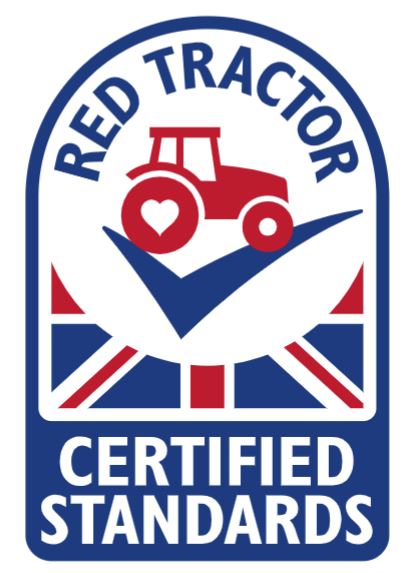
Assured Food Standards is a United Kingdom company which licenses the Red Tractor quality mark.
Red Tractor is the UK’s largest food and farm standards scheme, covering all areas of food production from animal welfare and food safety to traceability and environmental protection.
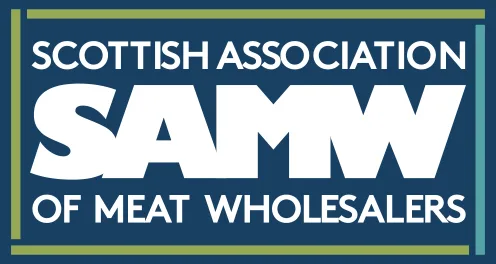
The Scottish Association of Meat Wholesalers represents red meat industry views and the interests of its member companies, working closely with partner organisations, Government Ministers and officials in Edinburgh and London to promote the efficient operation of Scotland’s meat sector and lobby for necessary improvements.
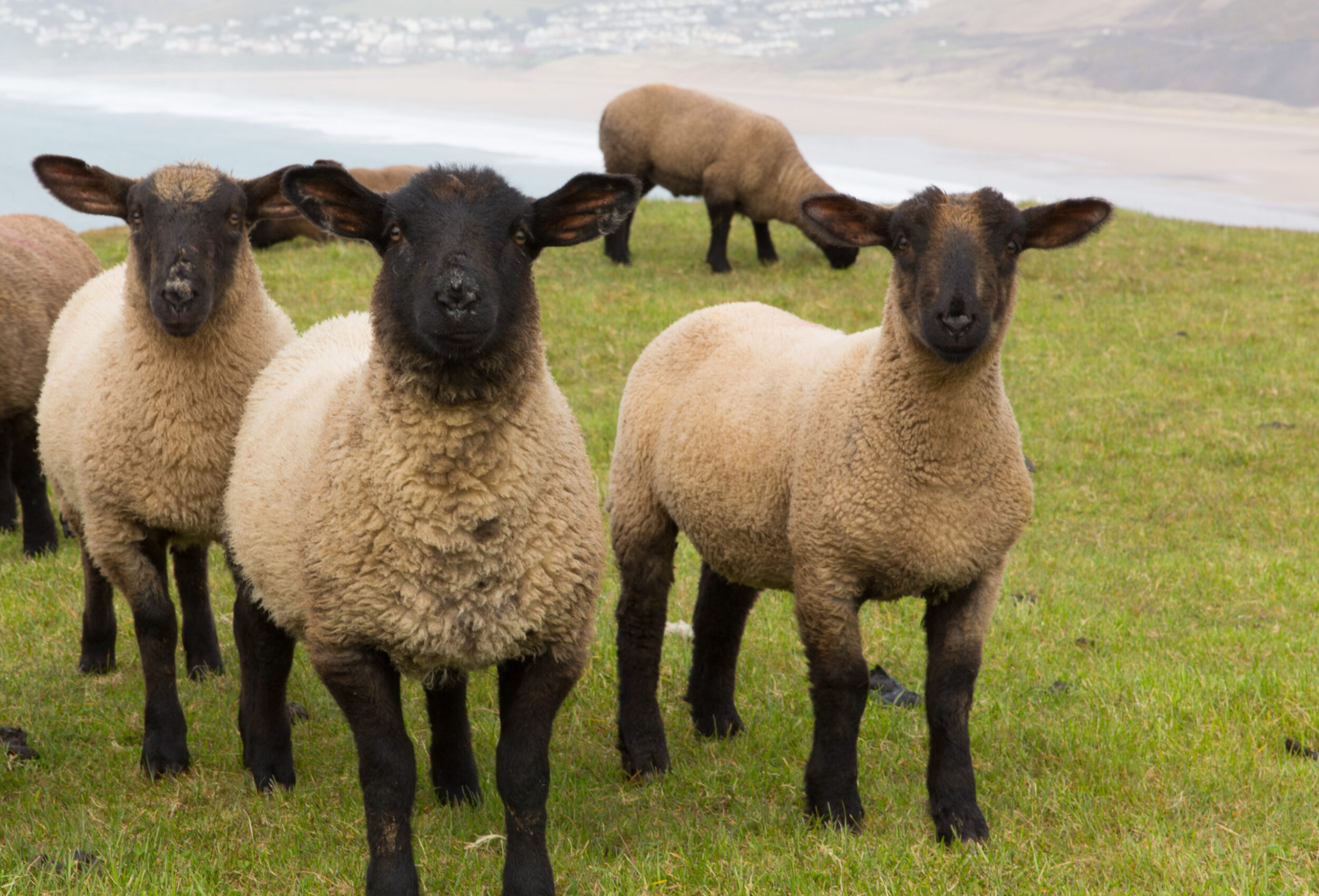
The Standard Quality Quotation (SQQ) is an average price for all lambs sold at market in Britain, marketed within predefined weight bands of 25.5kg and 45.5kg. For many years the range has been used as an indicator of market requirements.
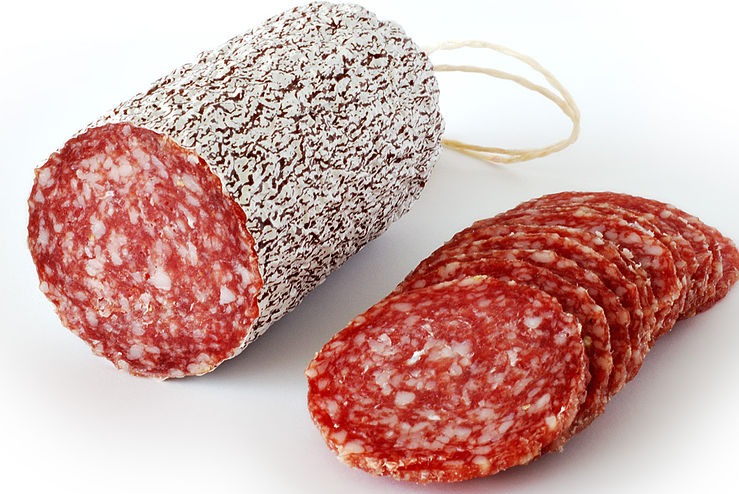
Salami is a cured sausage consisting of fermented and air-dried meat, typically pork. Historically, salami was popular among Southern, Eastern, and Central European peasants because it can be stored at room temperature for up to 40 days once cut, supplementing a potentially meager or inconsistent supply of fresh meat.

A sausage is a type of meat product usually made from ground meat, often pork, beef, or poultry, along with salt, spices and other flavourings. Other ingredients such as grains or breadcrumbs may be included as fillers or extenders.
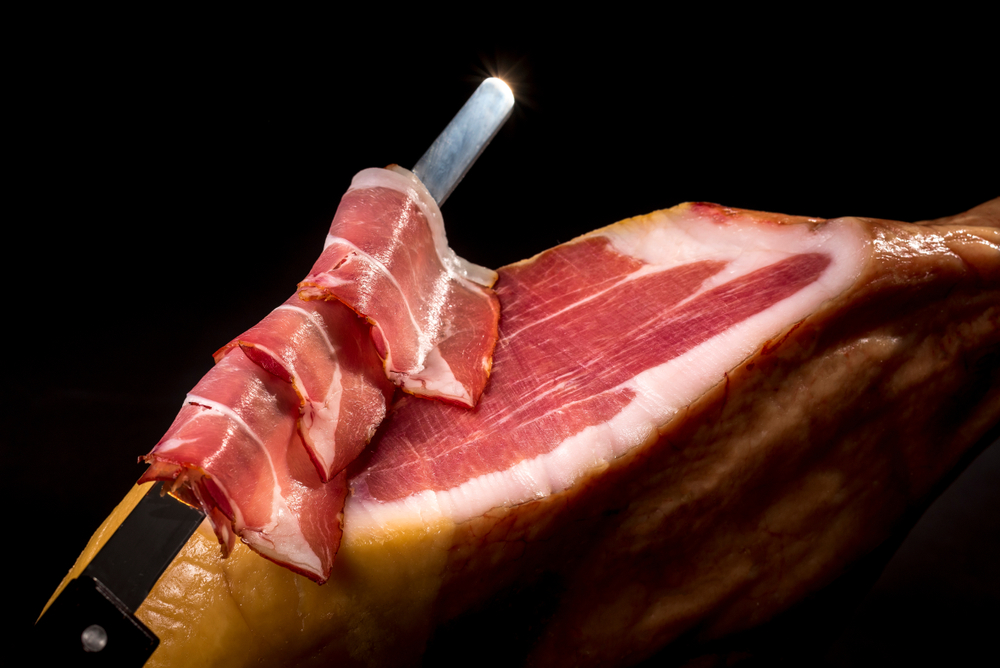
Serrano ham, also known as jamón serrano, is a type of dry-cured Spanish ham that is typically made from the hind legs of white pigs. This traditional Spanish cured ham is renowned for its rich flavour and distinctive taste. The name “serrano” refers to the mountainous regions (sierras) where these hams were traditionally cured.
It’s important to note that Serrano ham should be sliced thinly, allowing the flavours to be fully appreciated. Additionally, the quality of Serrano ham can vary, with some hams carrying designations such as “Jamón Serrano” or “Jamón Serrano de Teruel,” indicating specific regions or quality standards.
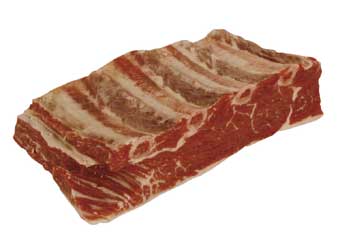
Short ribs refer to a flavoursome and rich cut of beef that comes from the lower ribcage of the cow. These ribs are known for their meaty and well-marbled characteristics, making them a popular choice for braising and slow-cooking methods to achieve tenderness and enhance their savoury flavour.
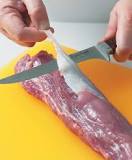
A tough connective tissue surrounding muscle; the pearlescent membrane found on certain cuts of meat that is removed before cooking to prevent curling.
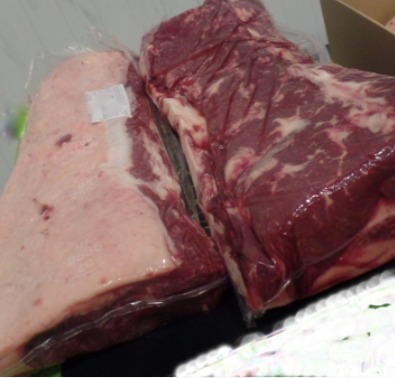
This is typically sold boned and rolled. A prime cut which is suitable for a classic sunday roast. Sirloin Steak comes from the same area but cut into steaks such as “T”-bone, Porterhouse and Entrecote. Prime cuts which are suitable for grilling, frying, stir-fries and barbecuing.
Beef Fillet also comes from this section. Probably the most prized cut of beef, the fillet is very tender and very lean, as a steak it is suitable for quick cooking under the grill or frying. Larger pieces are used for dishes such as Beef Wellington. Other names for cuts of fillet include Filet Mignon, Tenderloin, Tournedos and Chateaubriand.
The name “sirloin” has an interesting history with a blend of myth and linguistic evolution. A popular tale suggests that King Charles II of England was so pleased with the taste of this cut of beef that he knighted it “Sir Loin.” However, this story is not supported by historical evidence.
The more likely origin comes from the Middle French term “surlonge,” which translates to “above the loin” (from “sur” meaning “over” or “above” and “longe” meaning “loin”). This term evolved into “surloine” in early 15th-century English and eventually became “sirloin” as we know it today. The myth of the knighting, while entertaining, is considered a fanciful invention.
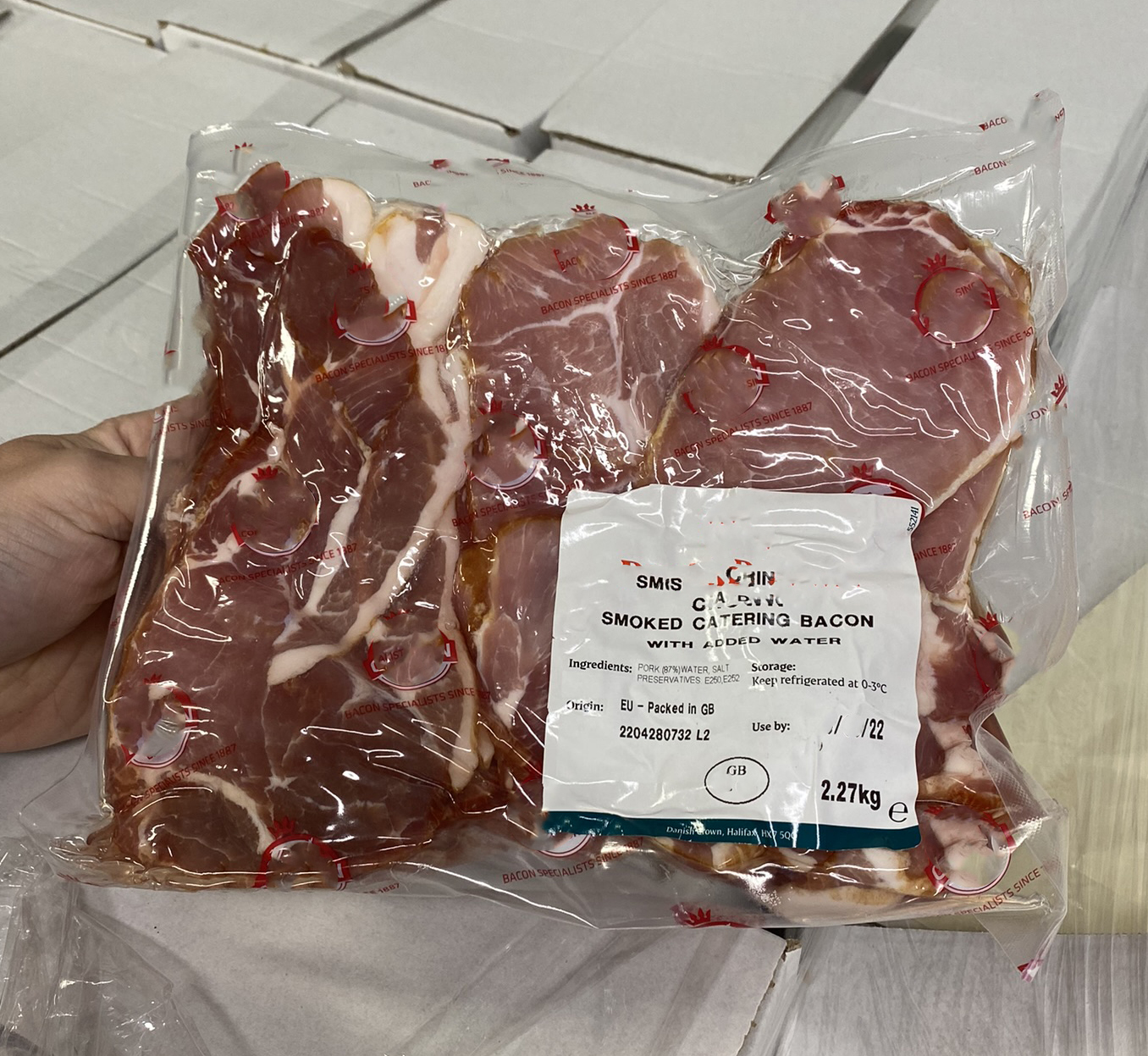
Preserved or flavoured by applying smoke to meats, usually after curing. Cold smoking is done at lower temperatures so as not to cook the protein in the meat; hot smoking is done at higher temperatures to cook the protein and smoke it at the same time.
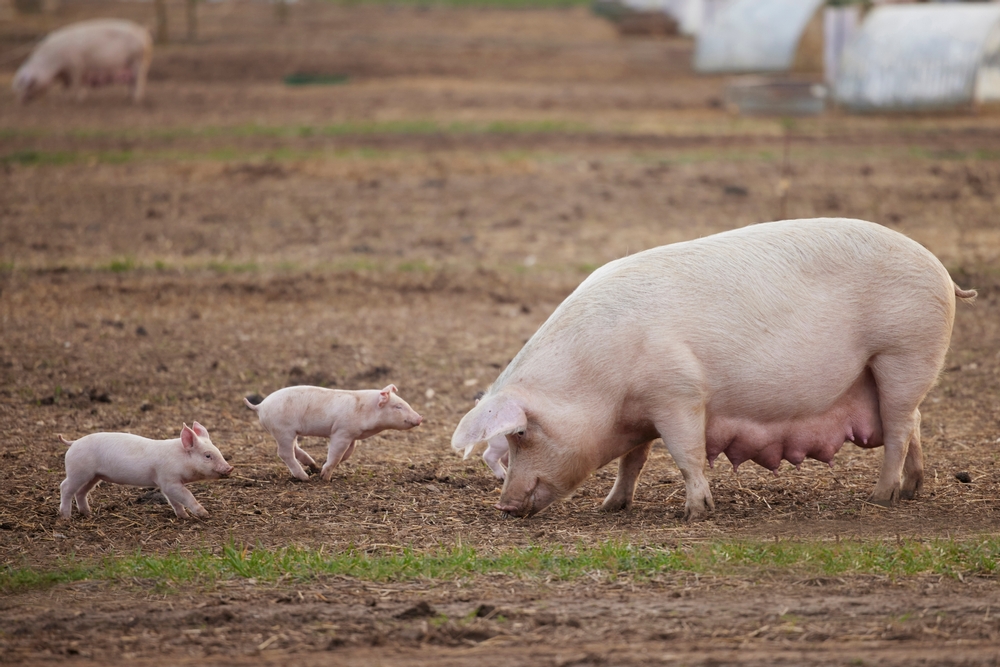
A “sow” is a mature female pig that has given birth to one or more litters of piglets. Sows are an essential component of swine farming, as they are the primary reproductive females in a breeding herd. Unlike gilts, which are young, sexually mature females that have not yet given birth, sows have gone through the farrowing process and are experienced mothers.
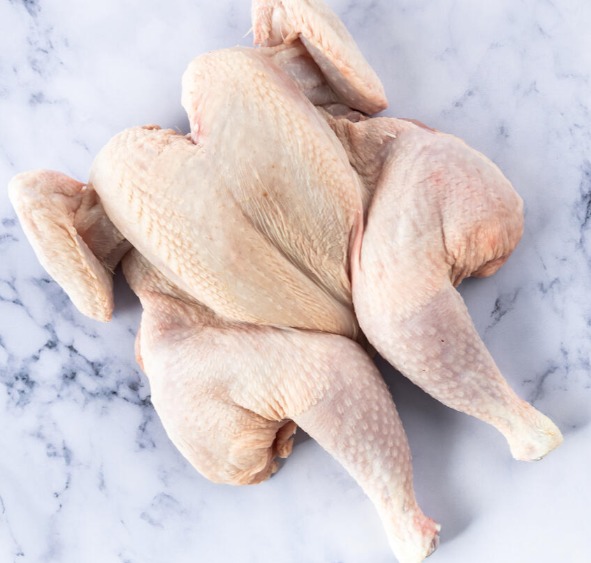
“Spatchcock” refers to a method of preparing poultry, typically chicken, where the backbone is removed so that the bird can be flattened out. This technique allows for more even cooking and quicker preparation, making it well-suited for grilling, roasting, or other high-heat cooking methods.
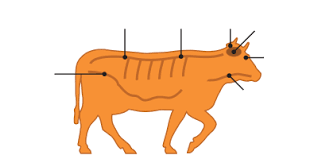
Parts removed from beef animals over 30 months old to lessen the risk of BSE. Some of the parts removed are the head, brain, part of the intestines, and most of the backbone.

The spleen is an organ found in vertebrates, including humans and animals, and it plays various roles in the immune system and blood filtration. In animals raised for meat production, the spleen is considered an organ meat and is consumed in certain cuisines.
Another meat trade term for spleens are ‘Melts’
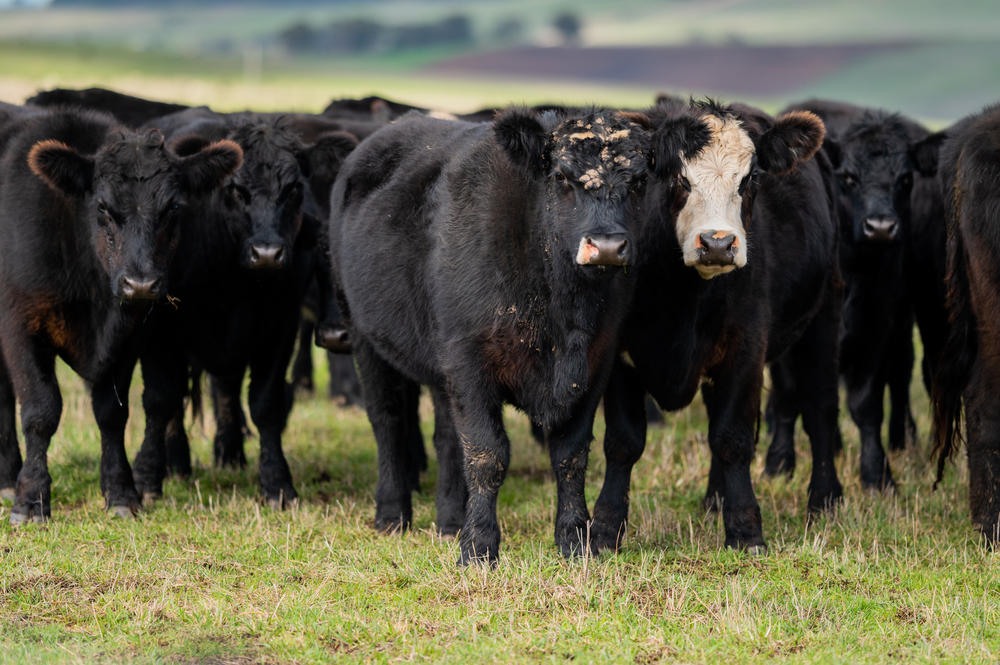
The term “stirk” is an old English word used to describe a young bullock or heifer, typically one that is between one and two years old. It is a term that has been historically used in farming and livestock contexts, particularly in British and Irish agricultural traditions.
The precise age at which an animal is considered a stirk can vary based on regional and local usage. In general, a stirk is an animal that is older than a calf but has not yet reached full maturity. As the animal continues to grow and matures, it may be referred to by different terms, such as bullock (for a young male bovine that has not been castrated) or heifer (for a young female bovine).
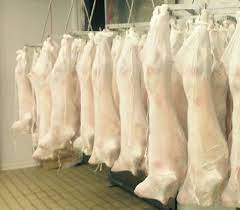
“Stockinette” refers to a fabric or material that is used in various contexts, including in the culinary and meat industry.
In the culinary field, particularly in meat processing, a stockinette is a tubular fabric or netting made of cotton or other materials. It is used to encase meats, especially large cuts like roasts or hams, during the cooking or curing process. The stockinette helps to maintain the shape of the meat, promotes even cooking, and provides a barrier between the meat and the cooking or curing environment.
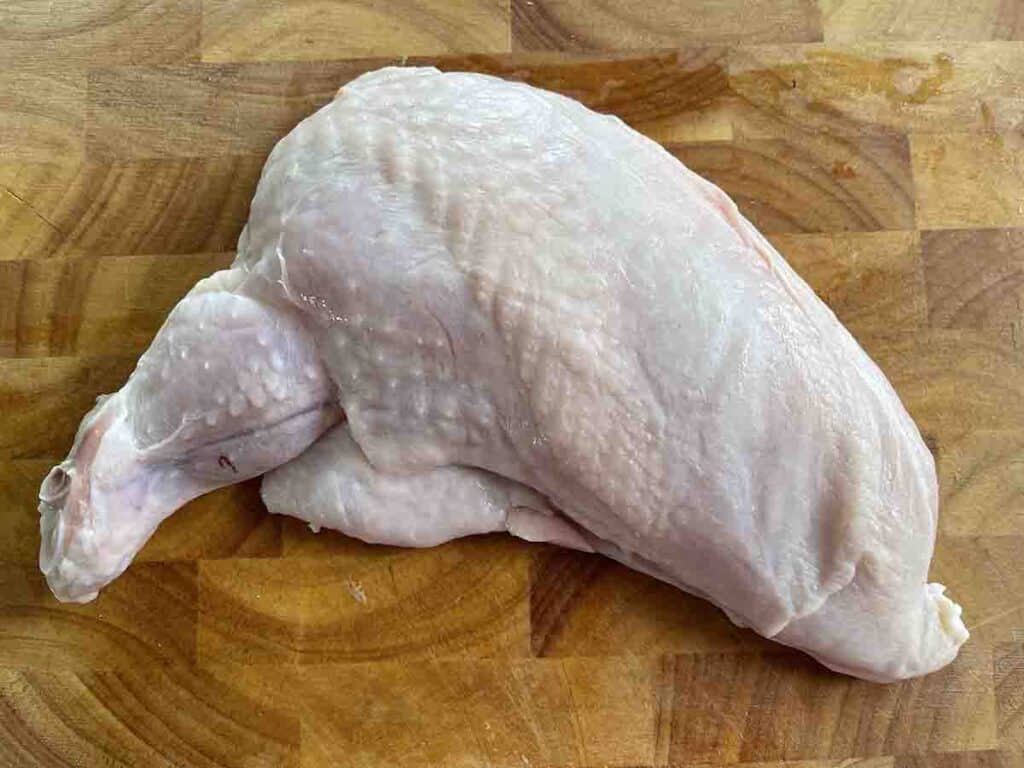
Breast of poultry with the wing bone attached.
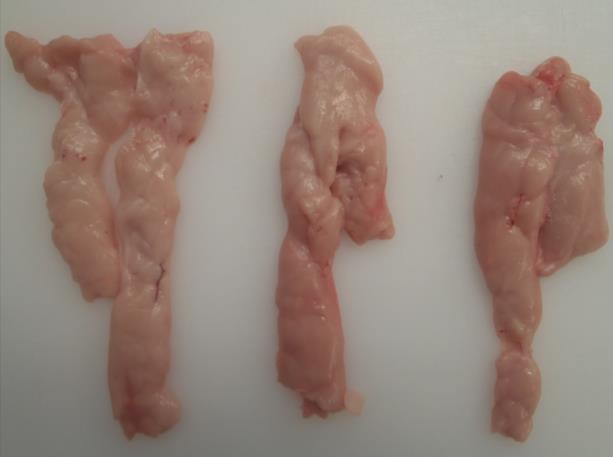
In beef and lamb, this is the thymus gland and is used as a food product. In pork, this is the pancreas gland and is used for pharmaceutical production.
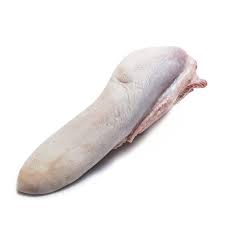
Refers to the close trimming of beef tongues. All bones, glands, and base muscles are removed.
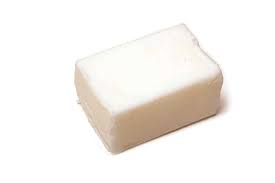
Tallow is simply beef fat, usually suet, that has been rendered (cooked down) to remove impurities.
Rendered beef or sheep fat is called tallow.
Rendered pork fat is called lard.
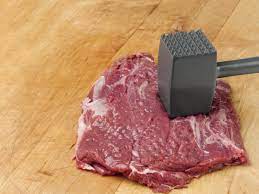
The process of meats becoming tender through natural processes like aging or marinating or mechanical processes like pounding or using a specialised machine.
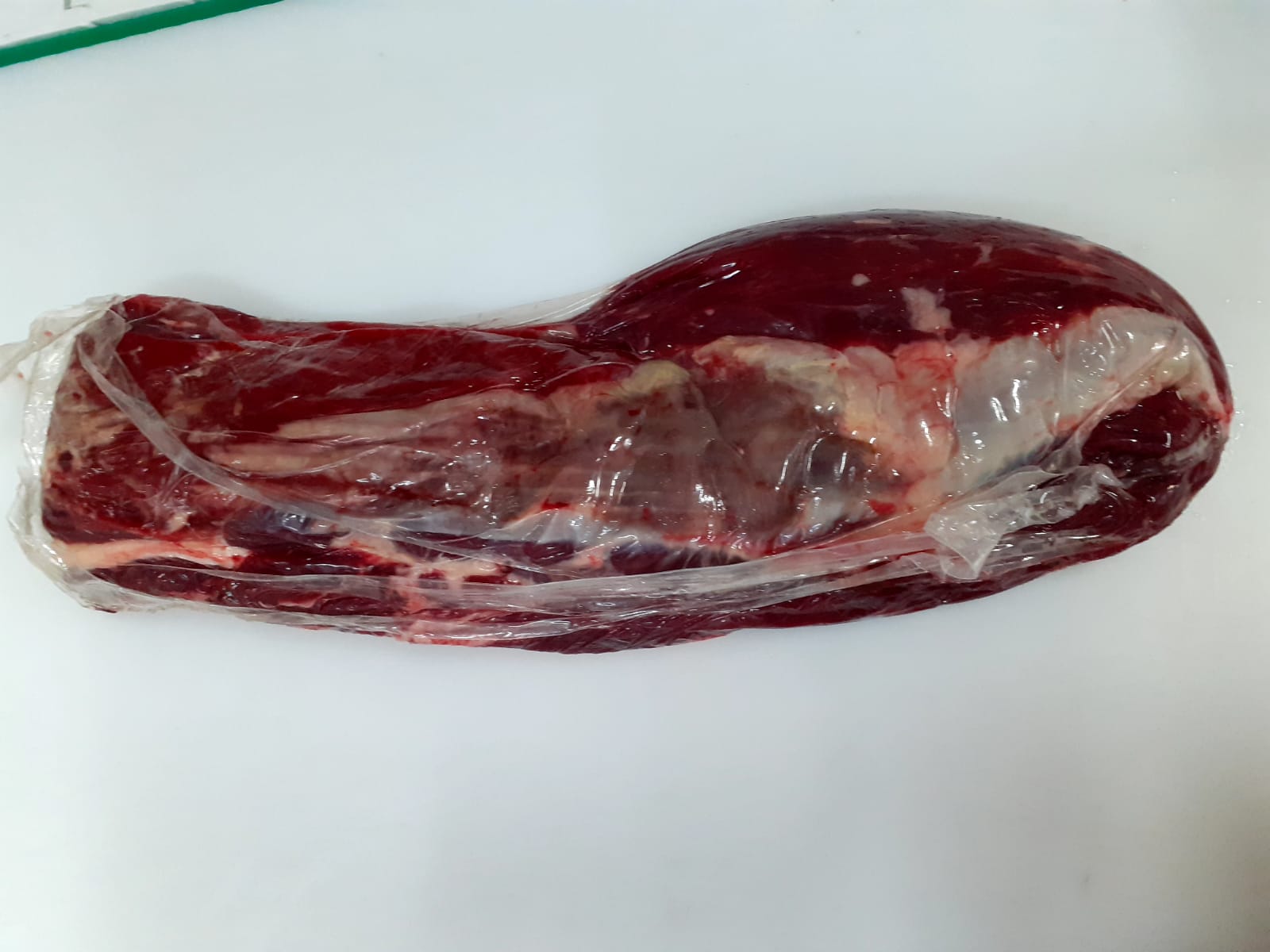
The tenderest part of the loin taken from under the short ribs in the hindquarters. Also known as a fillet.
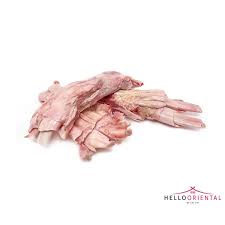
Very heavy collagen that forms at the end of muscle groups, such as a beef shank, which joins a muscle group to a bone at or near the exterior of a bone joint.
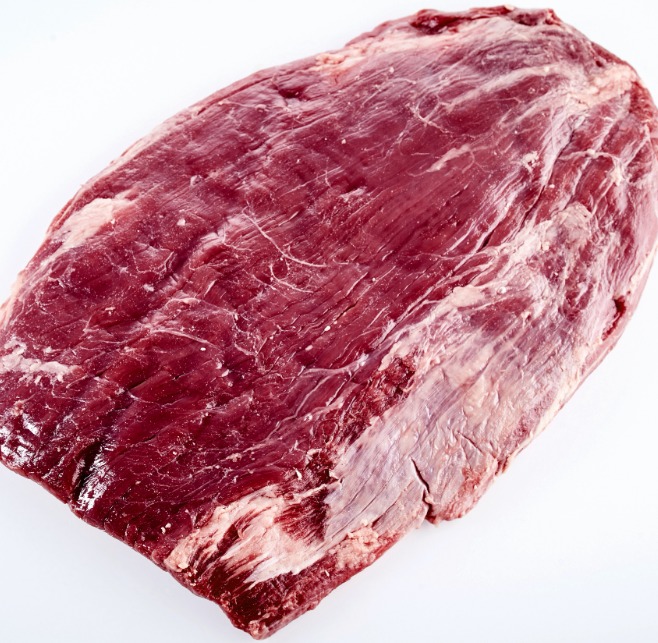
This joint is also known as Top Rump good for slow roasting as a joint or braised in pieces. Also sold as “stir fry” strips or flash fry steak. These can also be called flank steak.
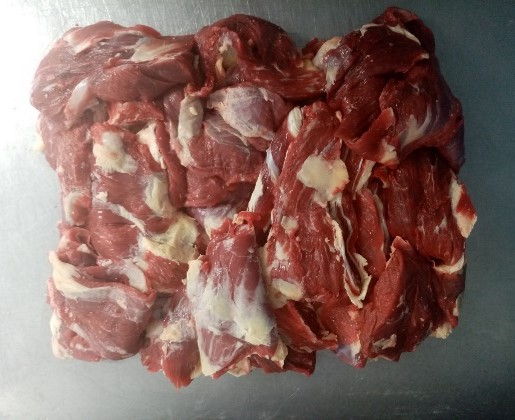
Refers to small pieces of meat usually produced as a by-product of a cut fabrication line.

The cleaned and denuded beef rumen and reticulum. Tripe from the rumen is considered regular tripe. Tripe from the reticulum is called honeycomb tripe.
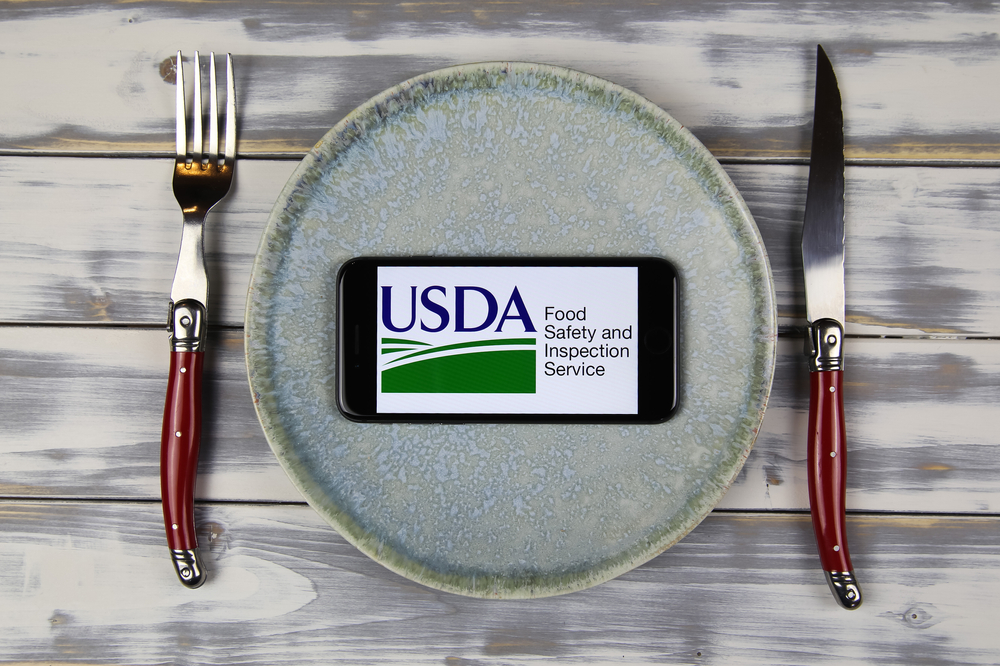
The United States Department of Agriculture (USDA) is a federal executive department responsible for developing and executing federal laws related to farming, agriculture, forestry, and food.
The USDA plays a crucial role in overseeing various aspects of the country’s food and agriculture systems.
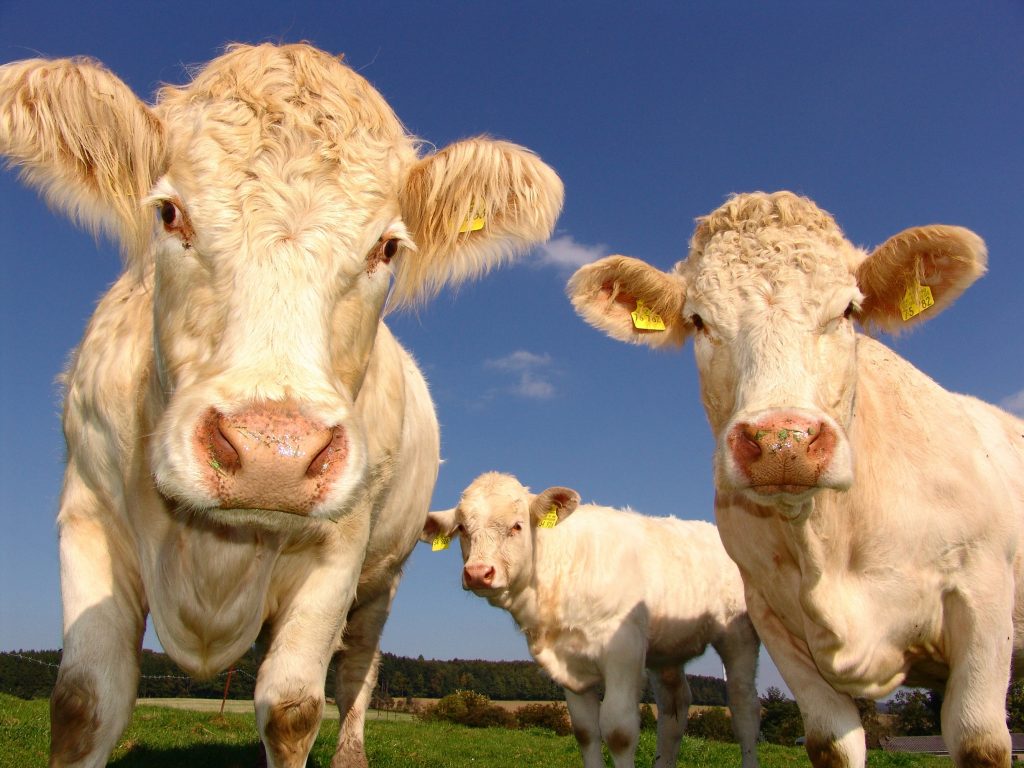
Under Thirty Months –
Cattle will be considered as under 30 months of age ( UTM ) as long as the erupting third permanent incisor is not above the surface of the gum, whether it is at the back, on the top or at the front of the mandible.
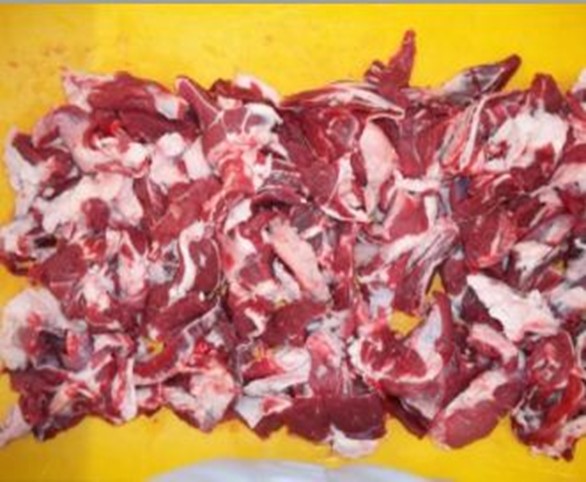
Visually lean. Usually attributed to trimmings and is the visual gauge of a meat to fat ratio. E.g. a 80/20vl has been visually gauged as 80% meat and 20% fat content.
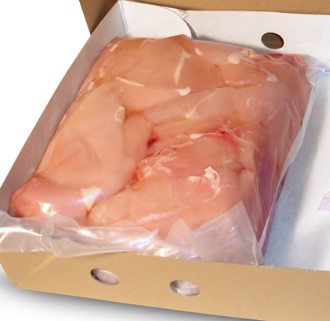
Vacuum packaging is a method of packaging food and other perishable items in which air is removed from the package before sealing. This process helps to extend the shelf life of the product by reducing the oxygen content, slowing down the oxidation and microbial growth that can lead to spoilage. Vacuum packaging is widely used in the food industry.
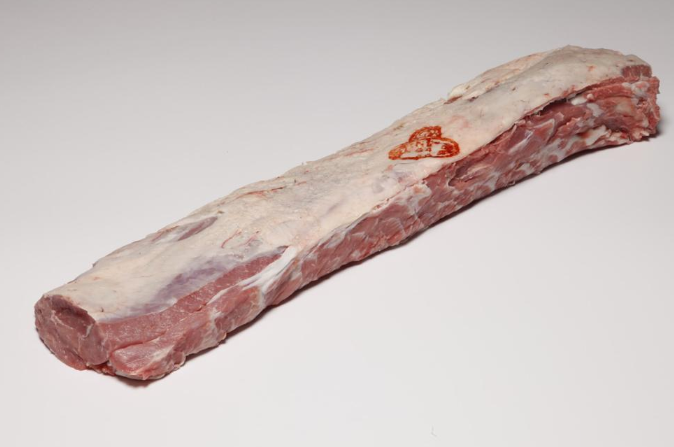
Meat derived from the carcass of young bovine animals, usually under five months of age. Veal is pale in colour, ranging from light to dark greyish pink.

Meat from any of the species of the deer family.
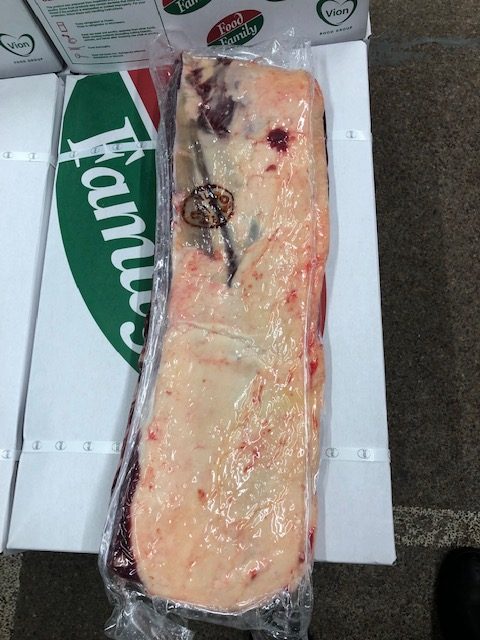
White Fatted Cow-
White fatted cow. Specifically selected cow products that have a white coloured fat covering usually indicating a better quality of meat.
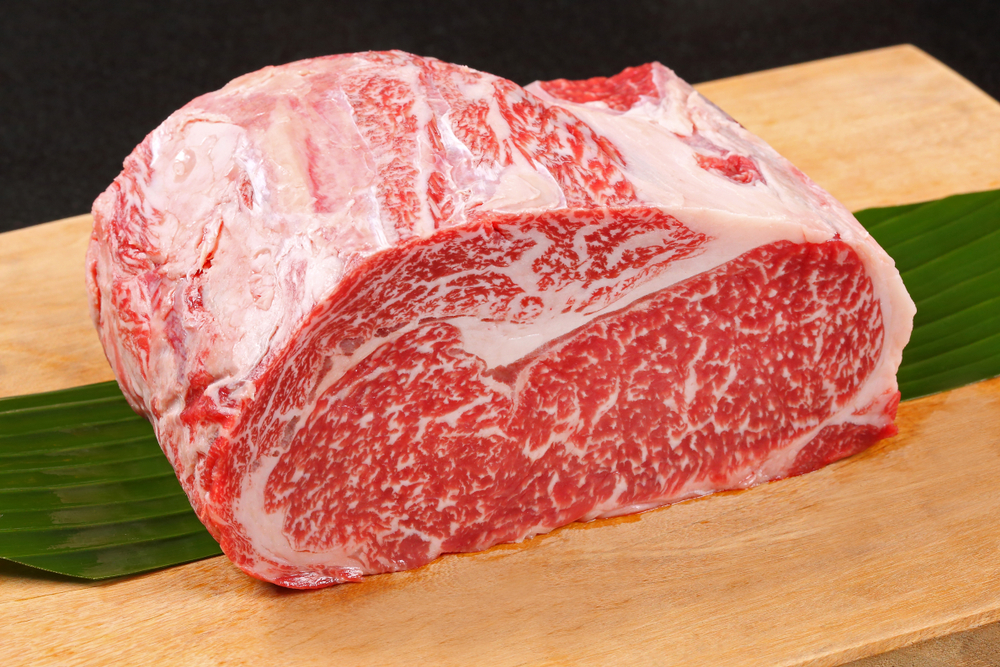
Wagyu is a breed of cattle native to Japan, and the term “Wagyu” itself translates to “Japanese cattle.” These cattle are known for their exceptional meat quality, specifically the high degree of marbling, tenderness, and flavour. The intense marbling of Wagyu beef results from the genetic predisposition of these cattle to produce a high percentage of intramuscular fat.
Wagyu cattle are raised with special care and attention to their diet, environment, and overall well-being. The most famous and highly regarded among the Wagyu breeds is the Kobe beef, which comes from the Tajima strain of Japanese Black cattle raised in the Hyogo Prefecture of Japan. Kobe beef is known for its luxurious quality, and it is subject to strict standards and regulations.
Wagyu beef has gained international acclaim for its exceptional taste and tenderness. It is often considered a premium and sought-after type of beef, commanding high prices in the culinary world. In recent years, Wagyu cattle have also been bred outside of Japan, and Wagyu-style beef is produced in various countries, though the quality can vary based on breeding and husbandry practices.
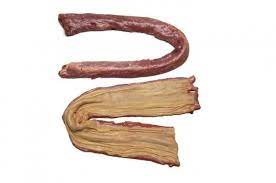
The muscular layer of the esophagus.
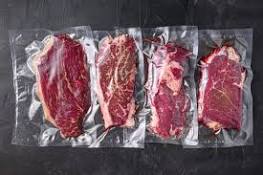
Vacuum-packaged carcass primal and sub-primal sections for further and longer periods of aging.
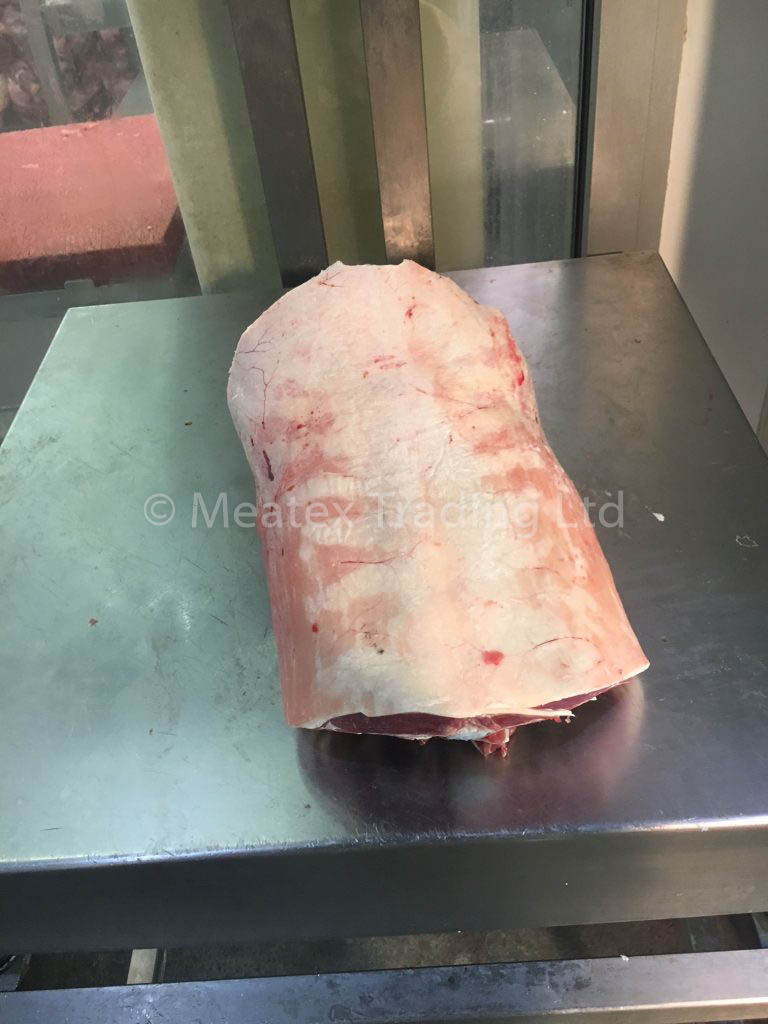
Usually used in terms of Lamb.
‘Double X’ is ex the suet and ex the breast. But the chump has not been removed.
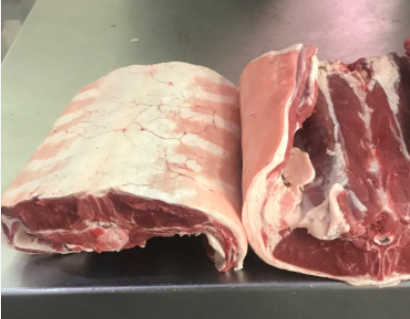
Usually used in terms of Lamb.
‘Treble X’ is ex the chump, ex the suet and ex the breast.
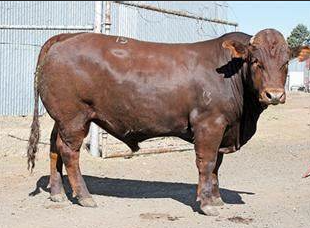
Young Bull
A young adult male cattle that has been fed on barley to speed up the bulking up process.
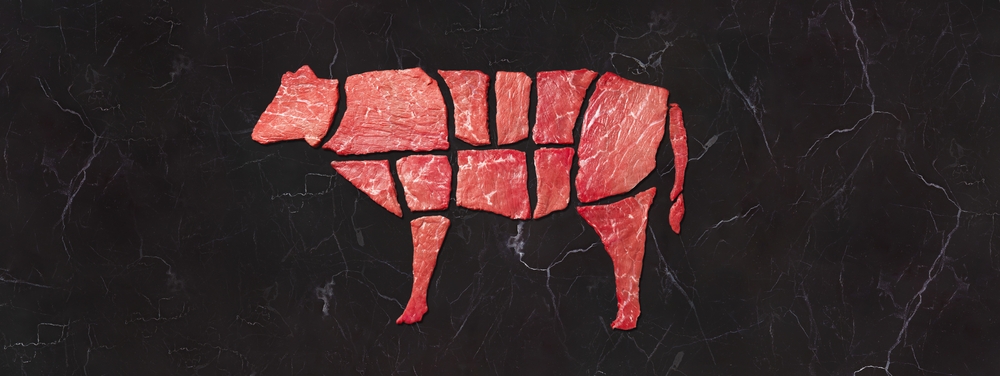
Yield Grade is a classification system used in the meat industry to estimate the amount of usable lean meat from a carcass. It is one of the grading systems employed to evaluate the yield of meat that can be obtained for processing and consumption. Yield Grade is often used in conjunction with Quality Grade, which assesses the meat’s characteristics such as marbling, colour, and texture.
The use of Yield Grade, in conjunction with other grading criteria, helps meat producers and processors optimise the value of meat from slaughtered animals and meet consumer preferences for leanness and quality. Different countries may have variations in their specific grading systems.

A very strict inspection of the meat product to maintain all possible health hazards and upkeep of the greatest quality.